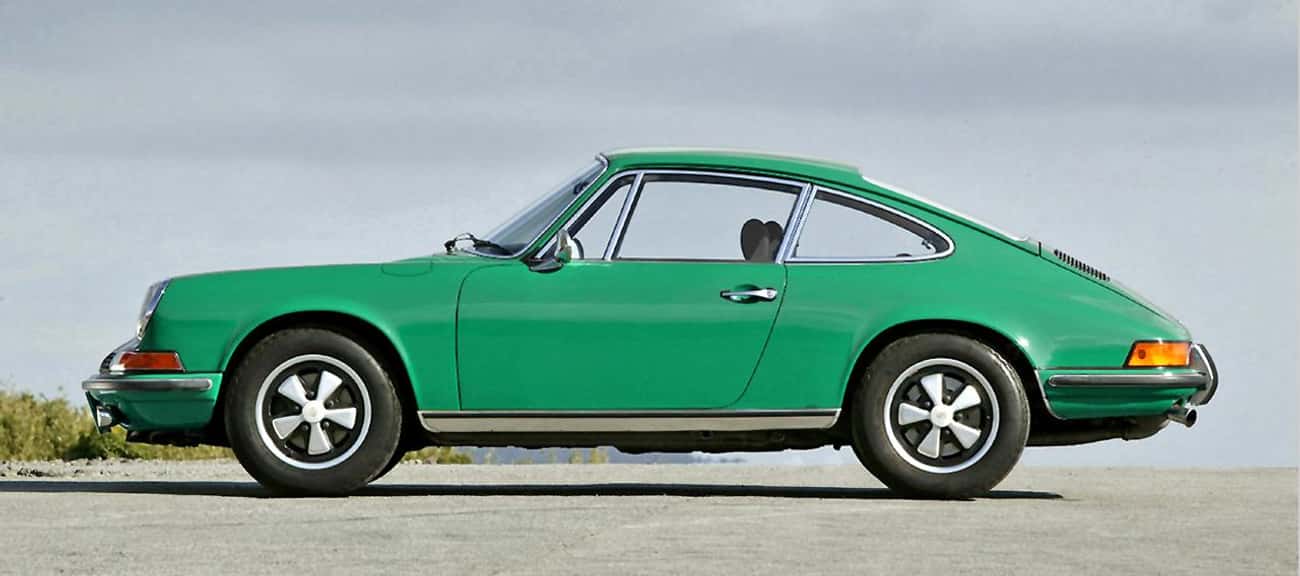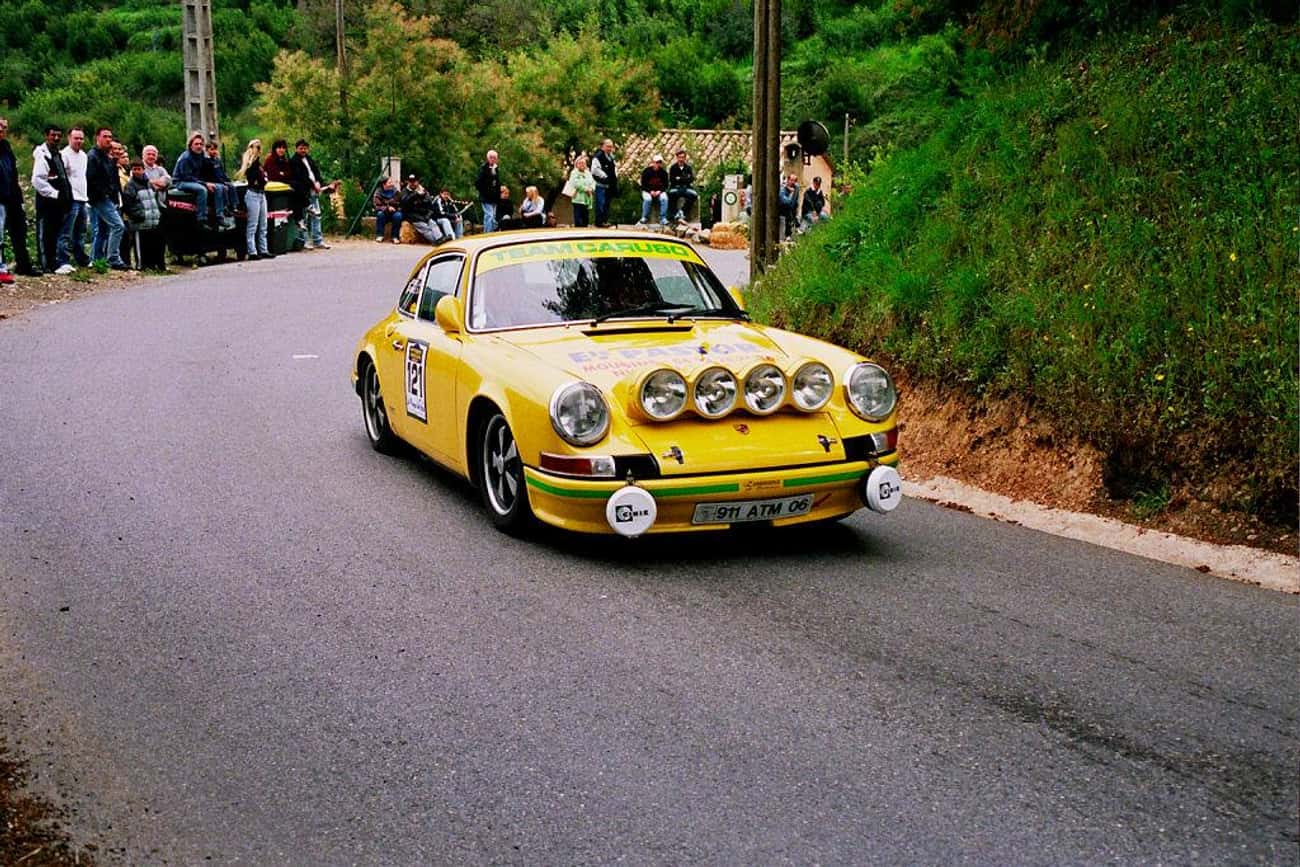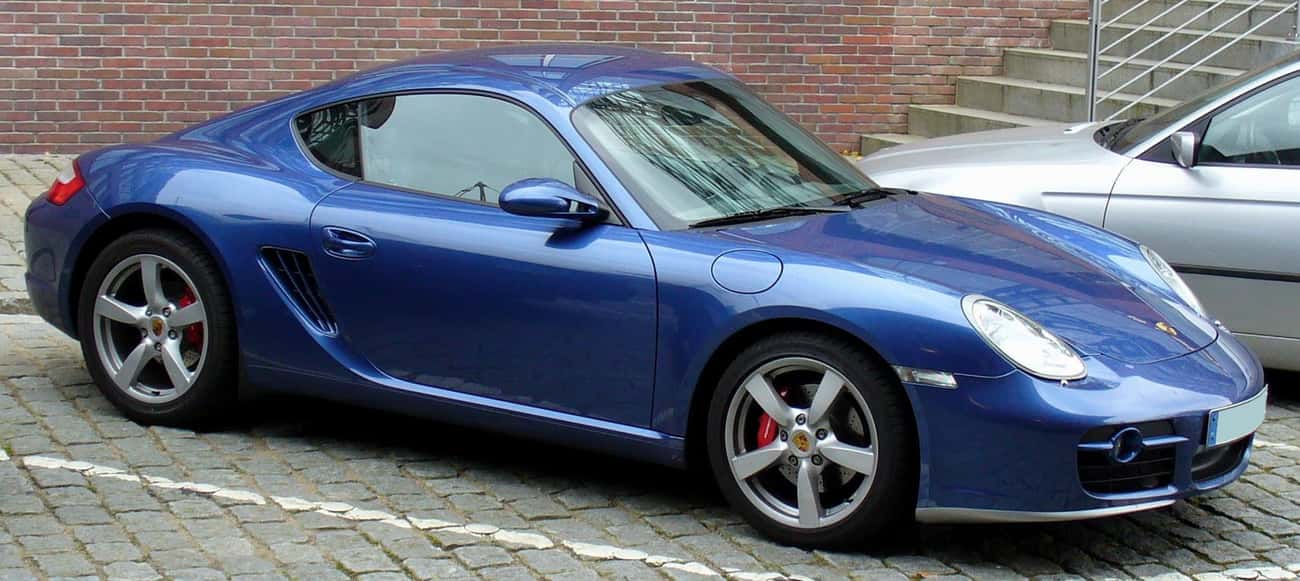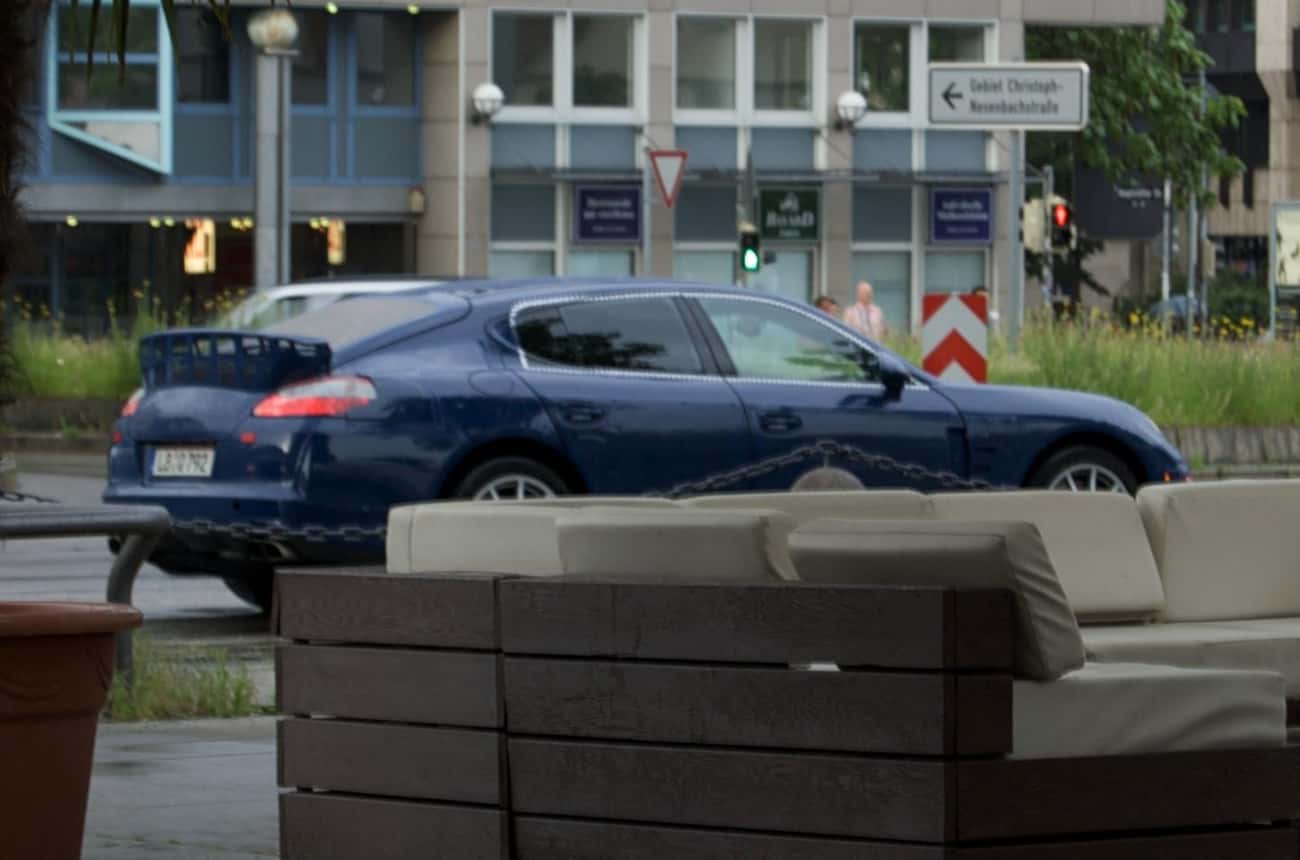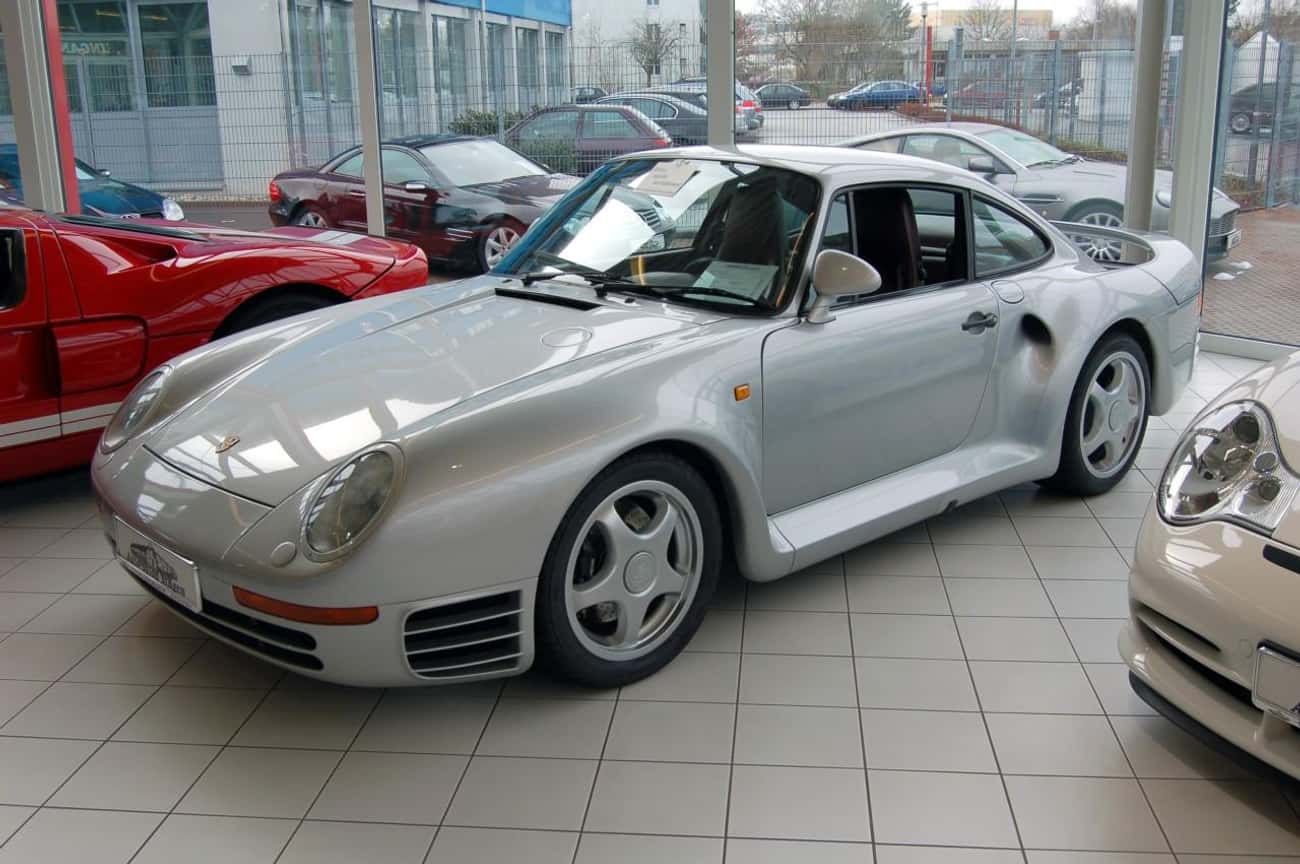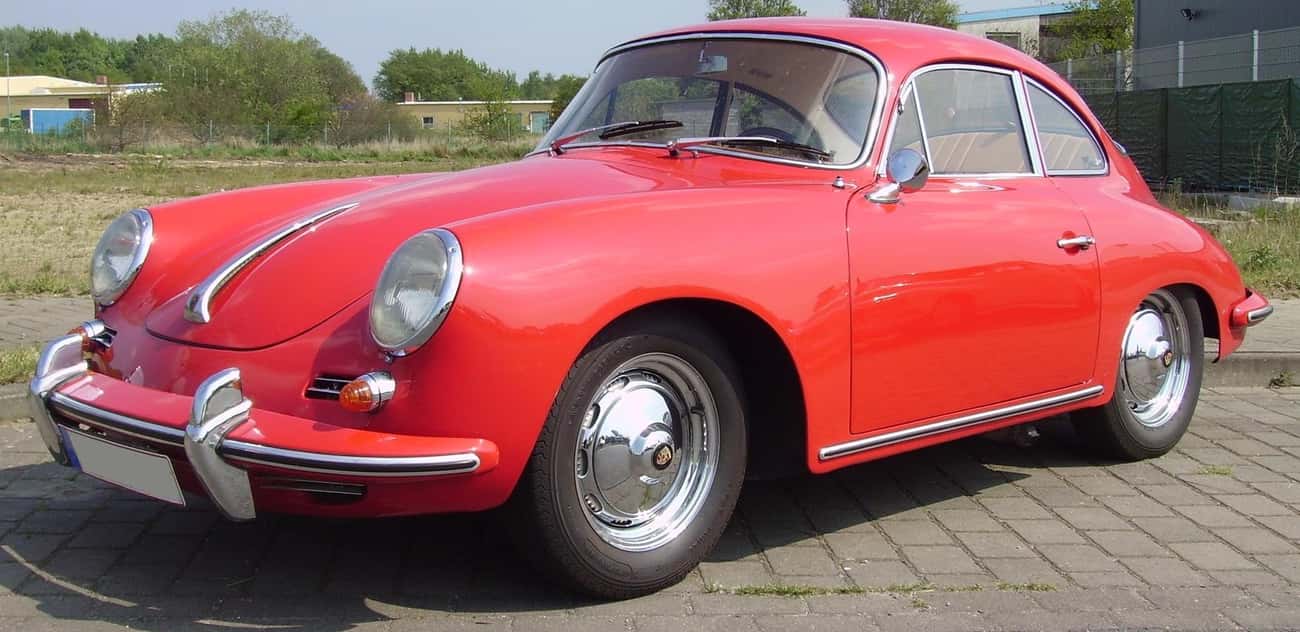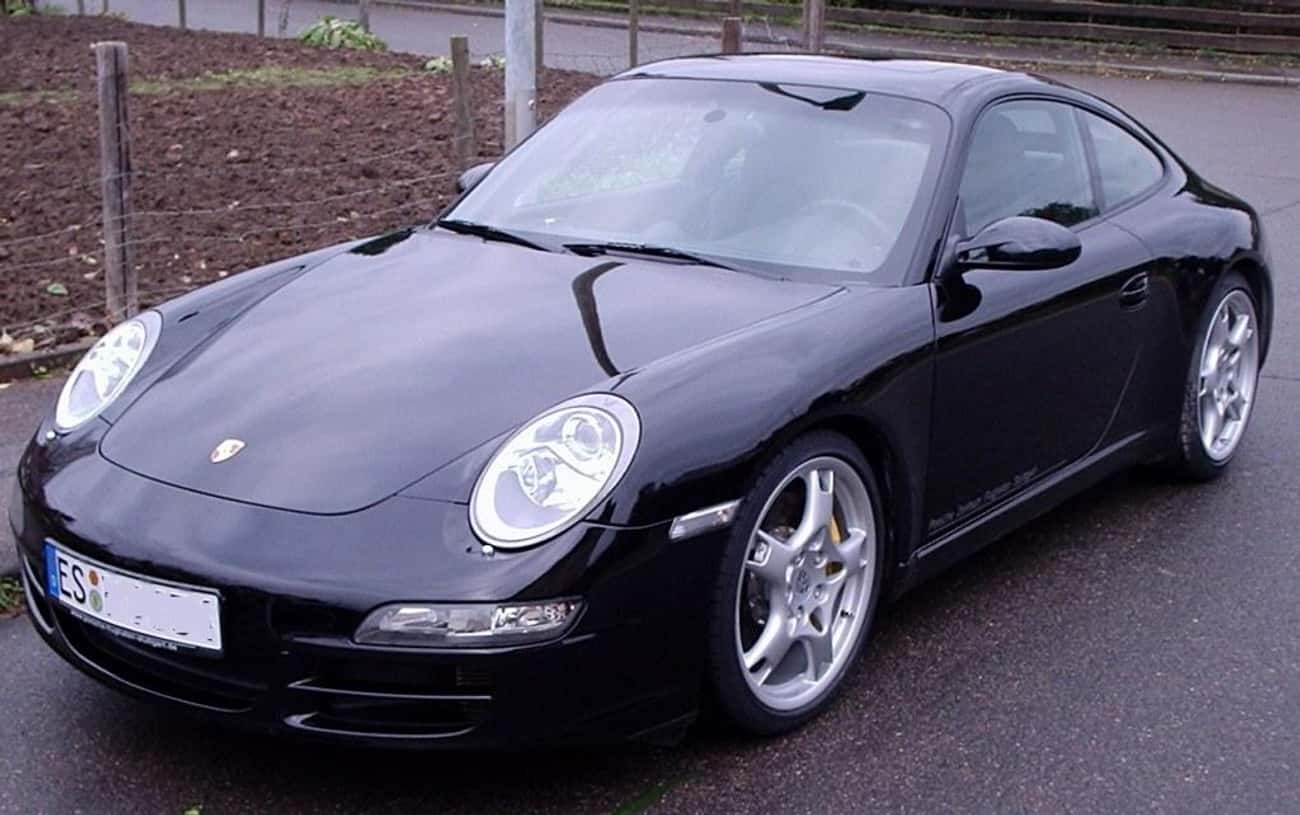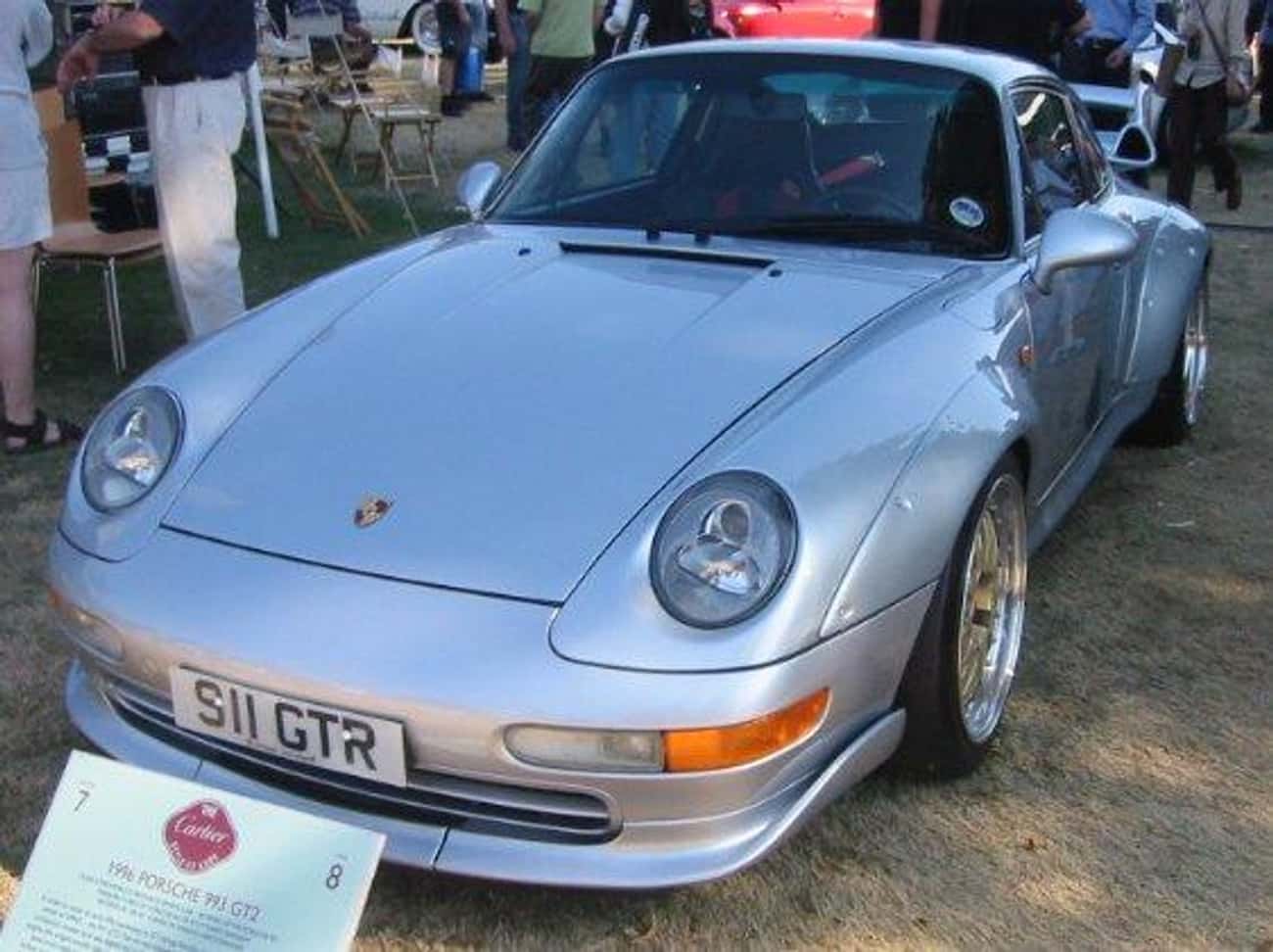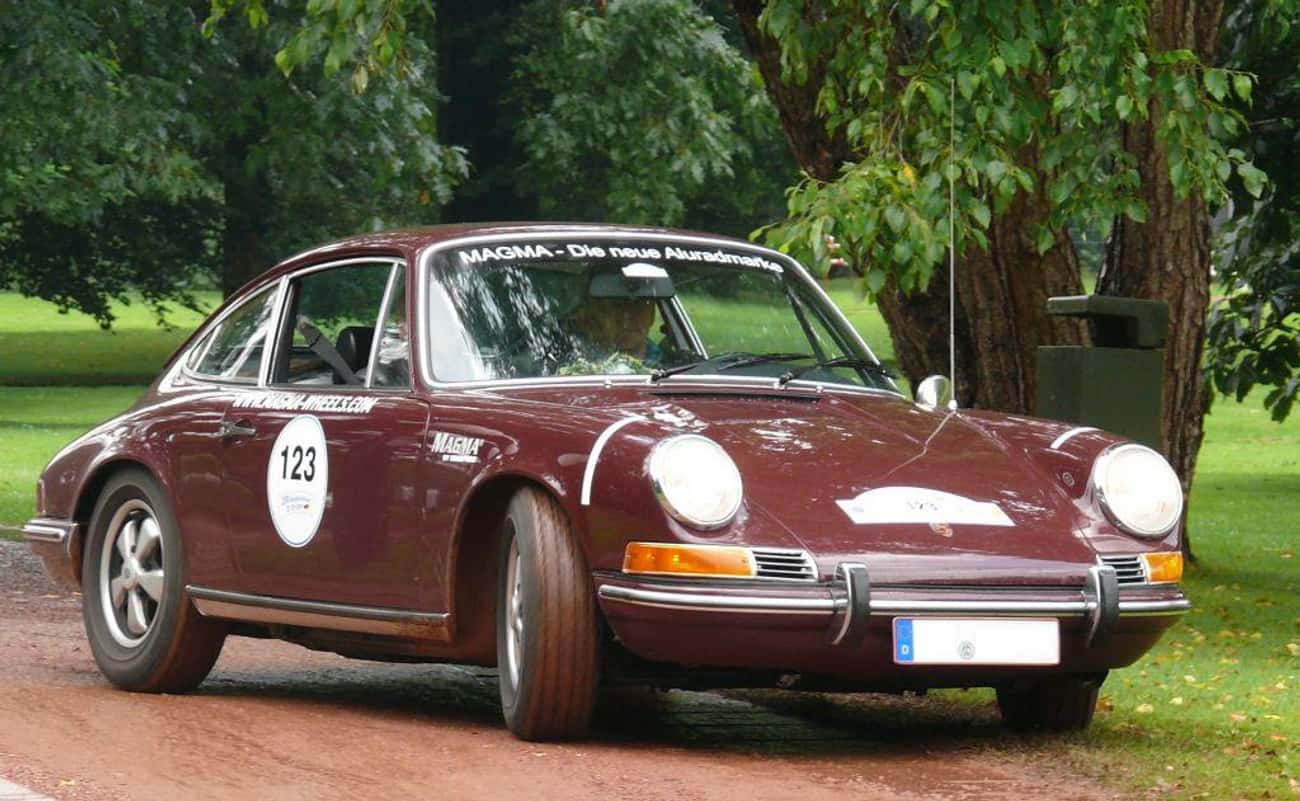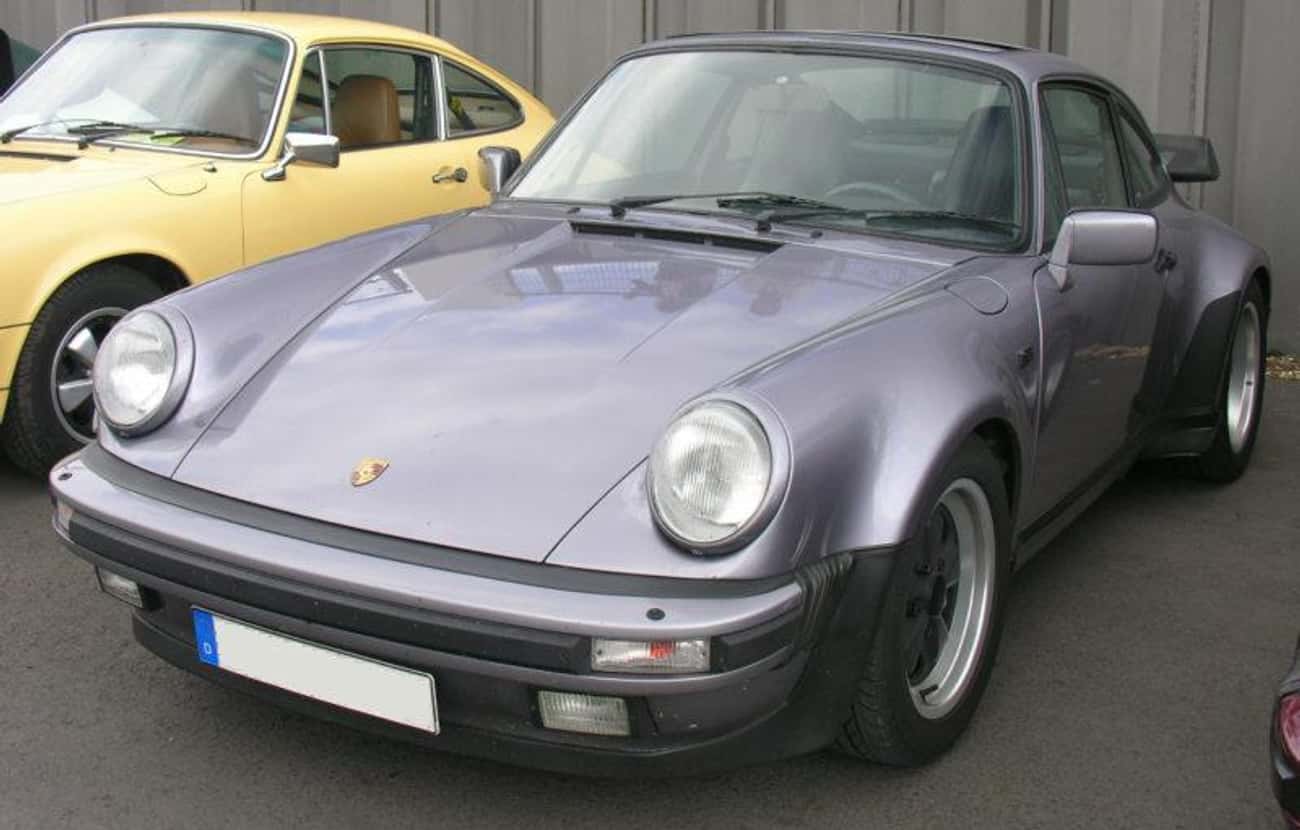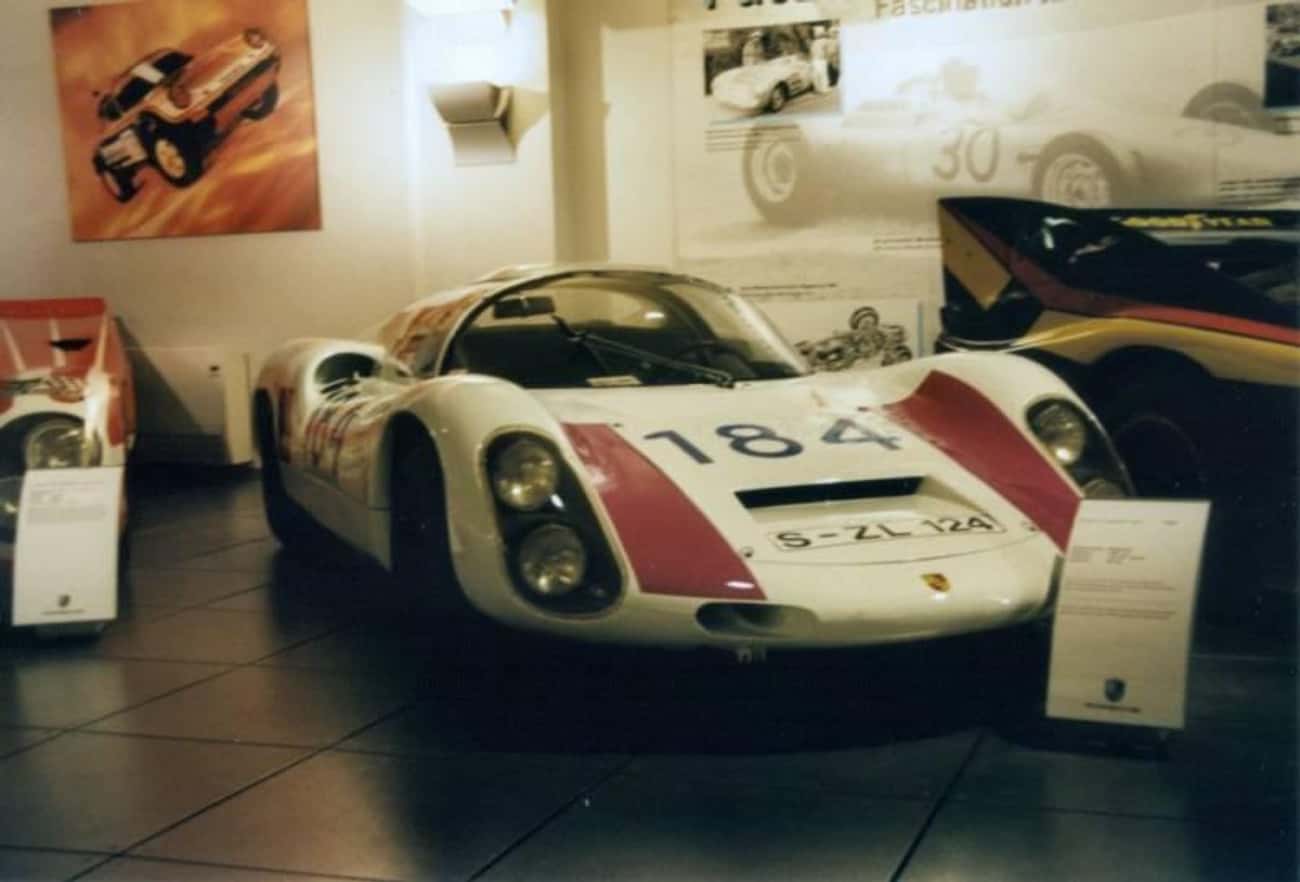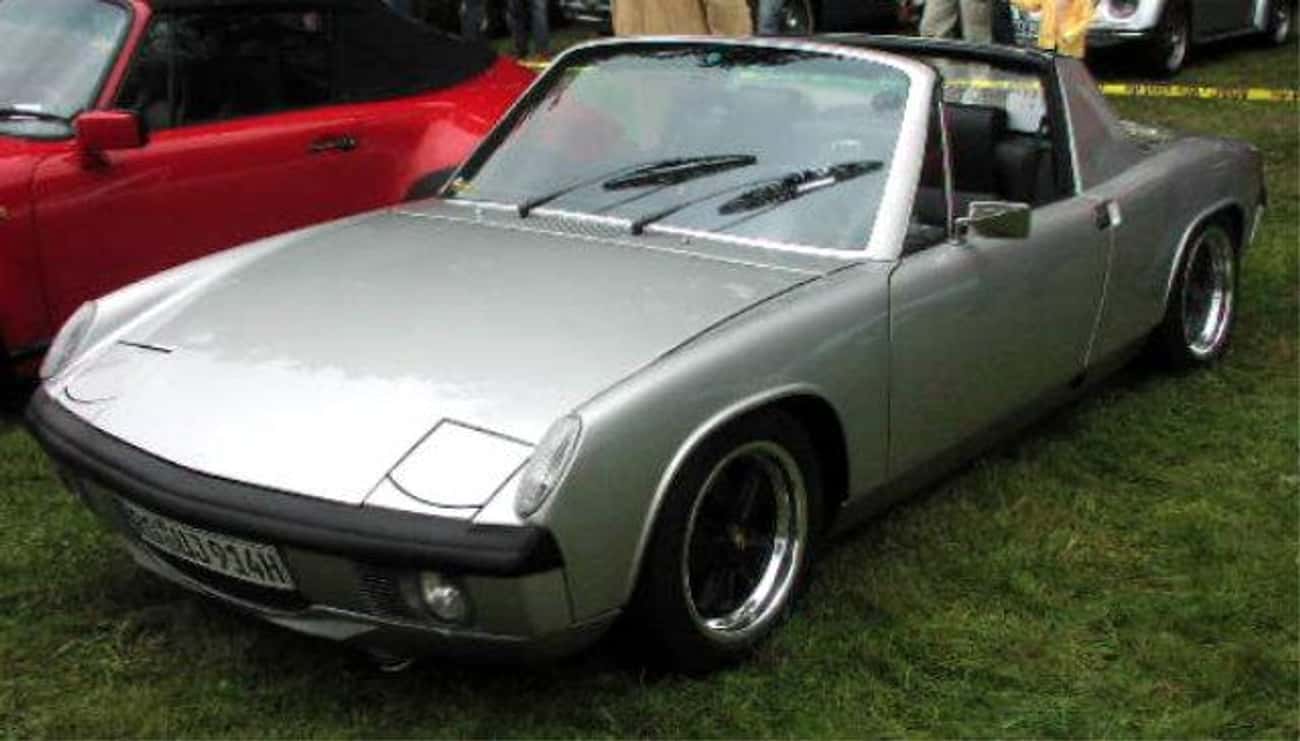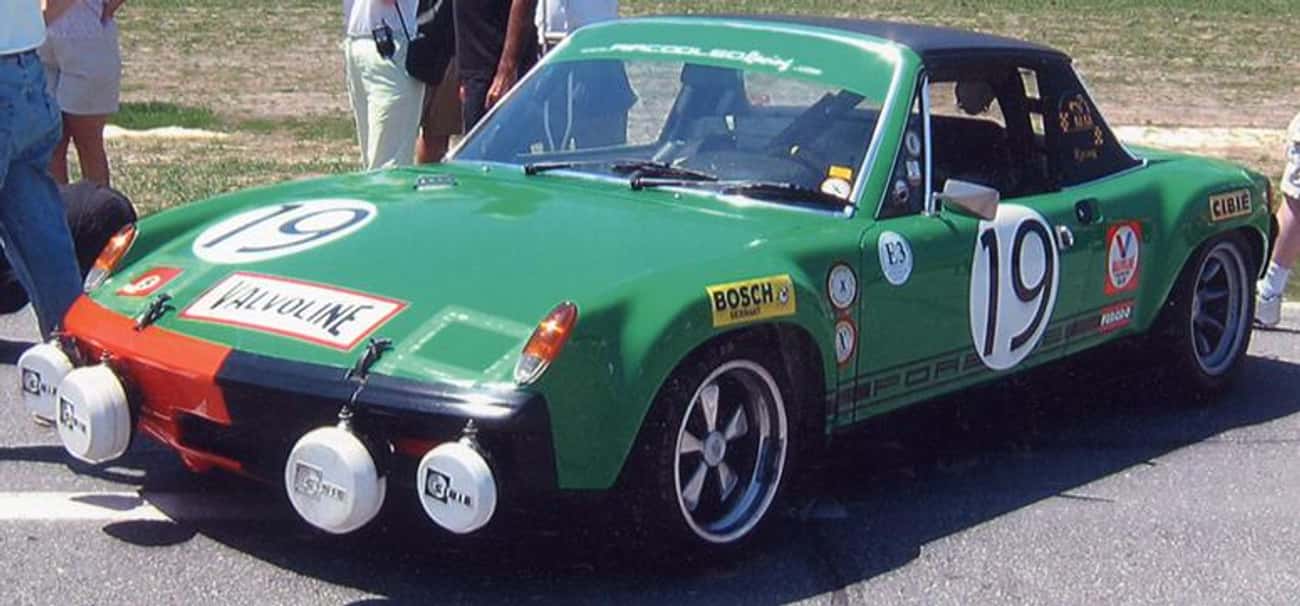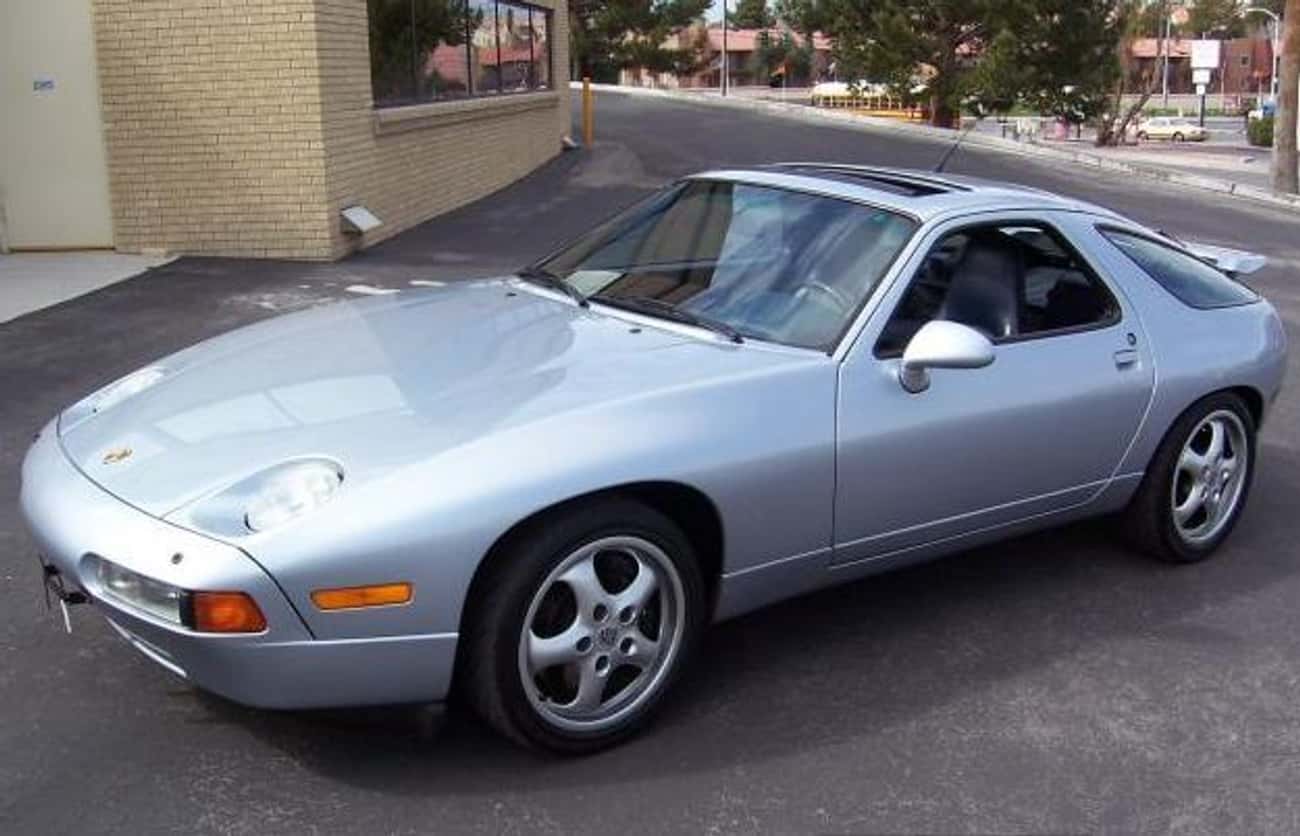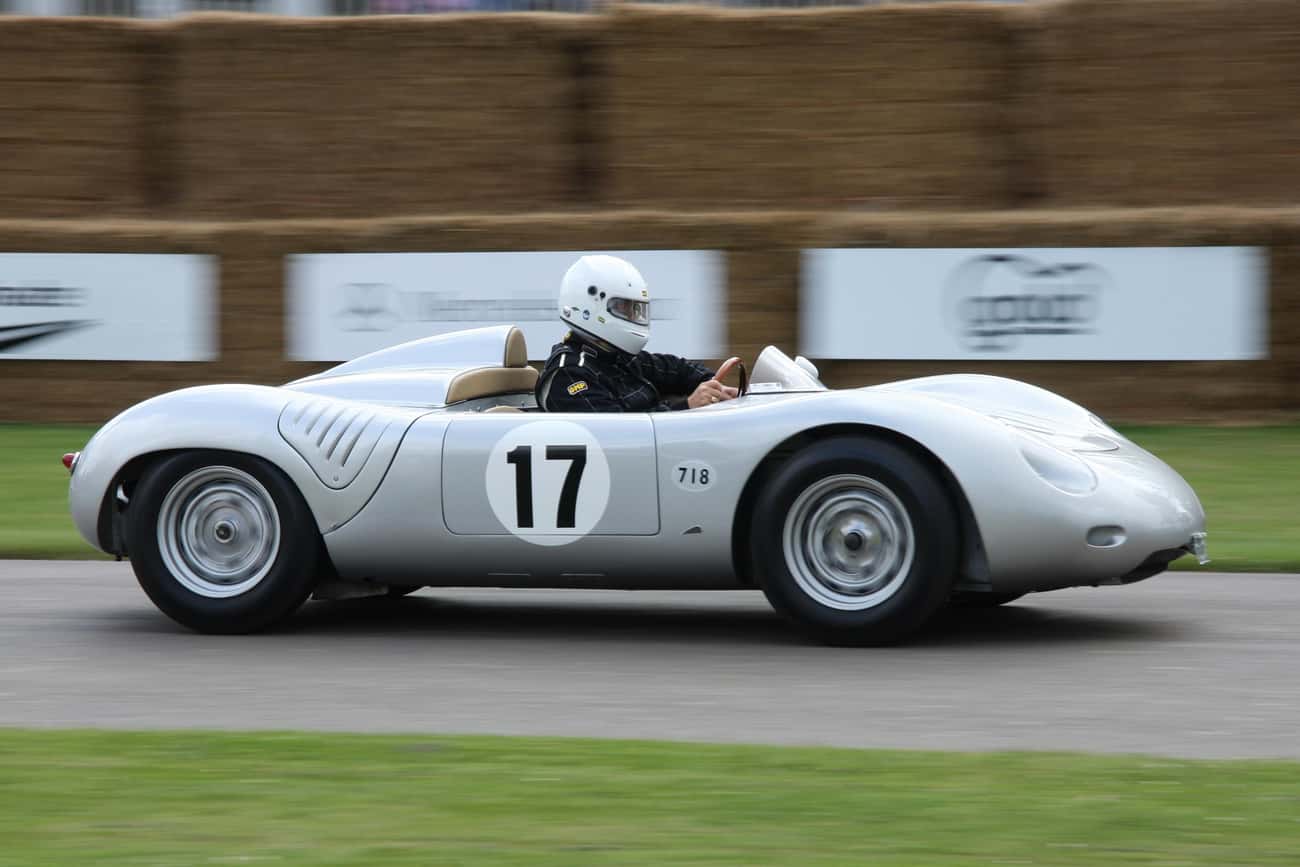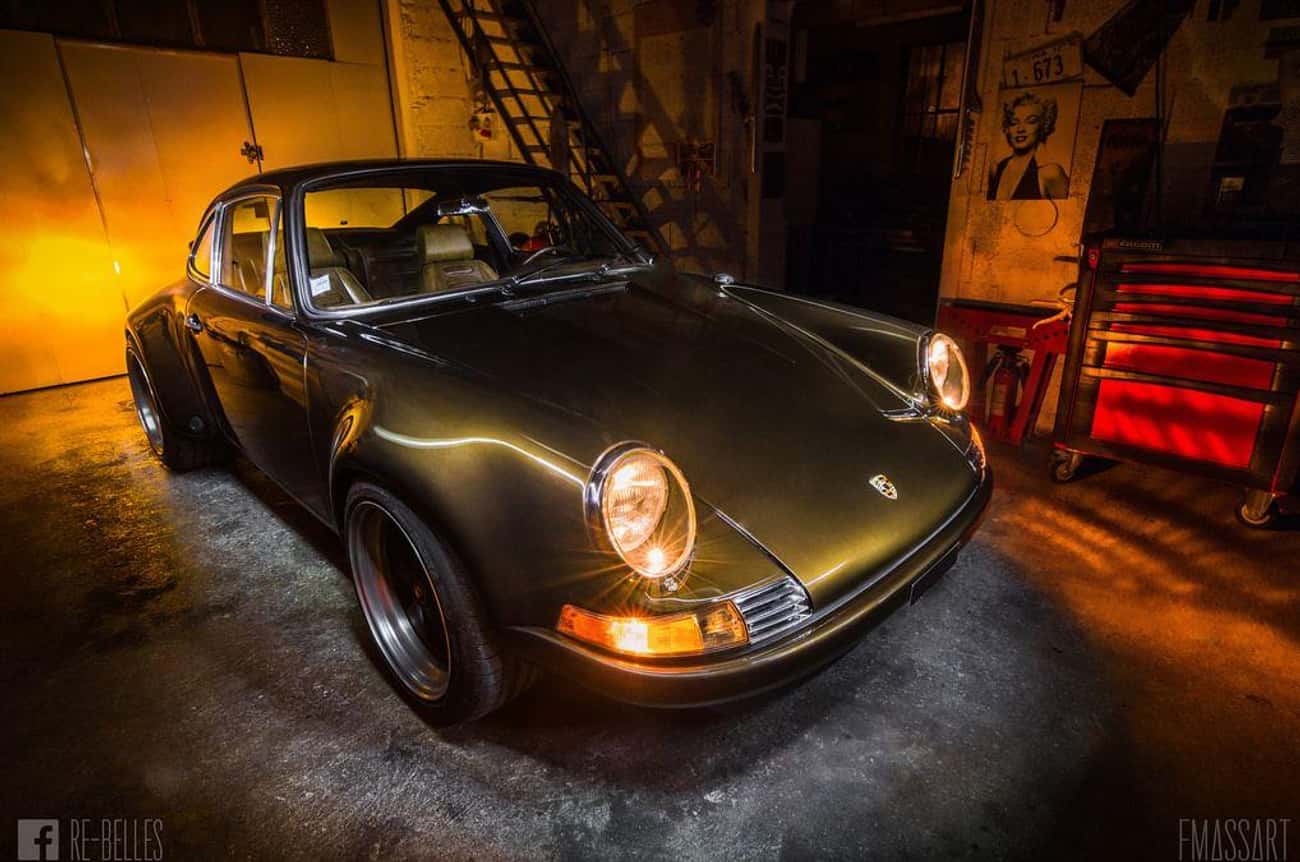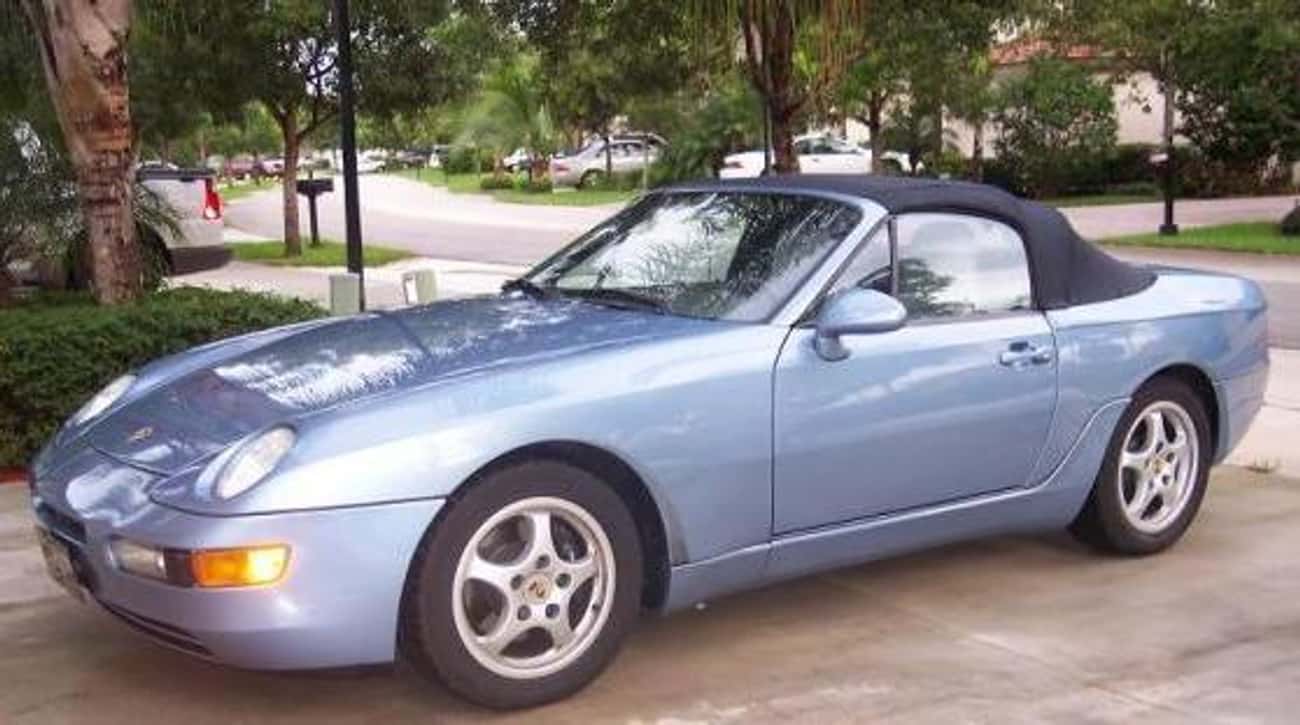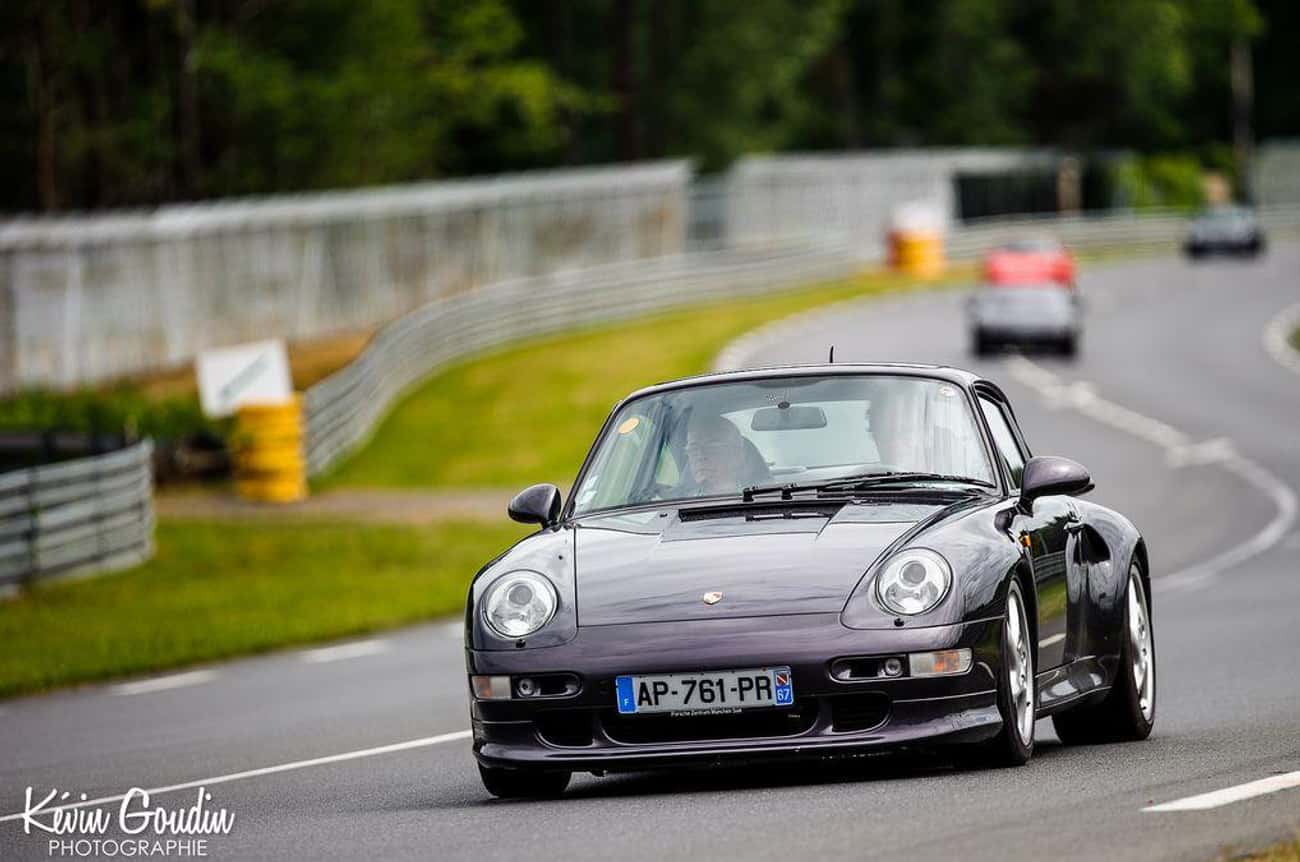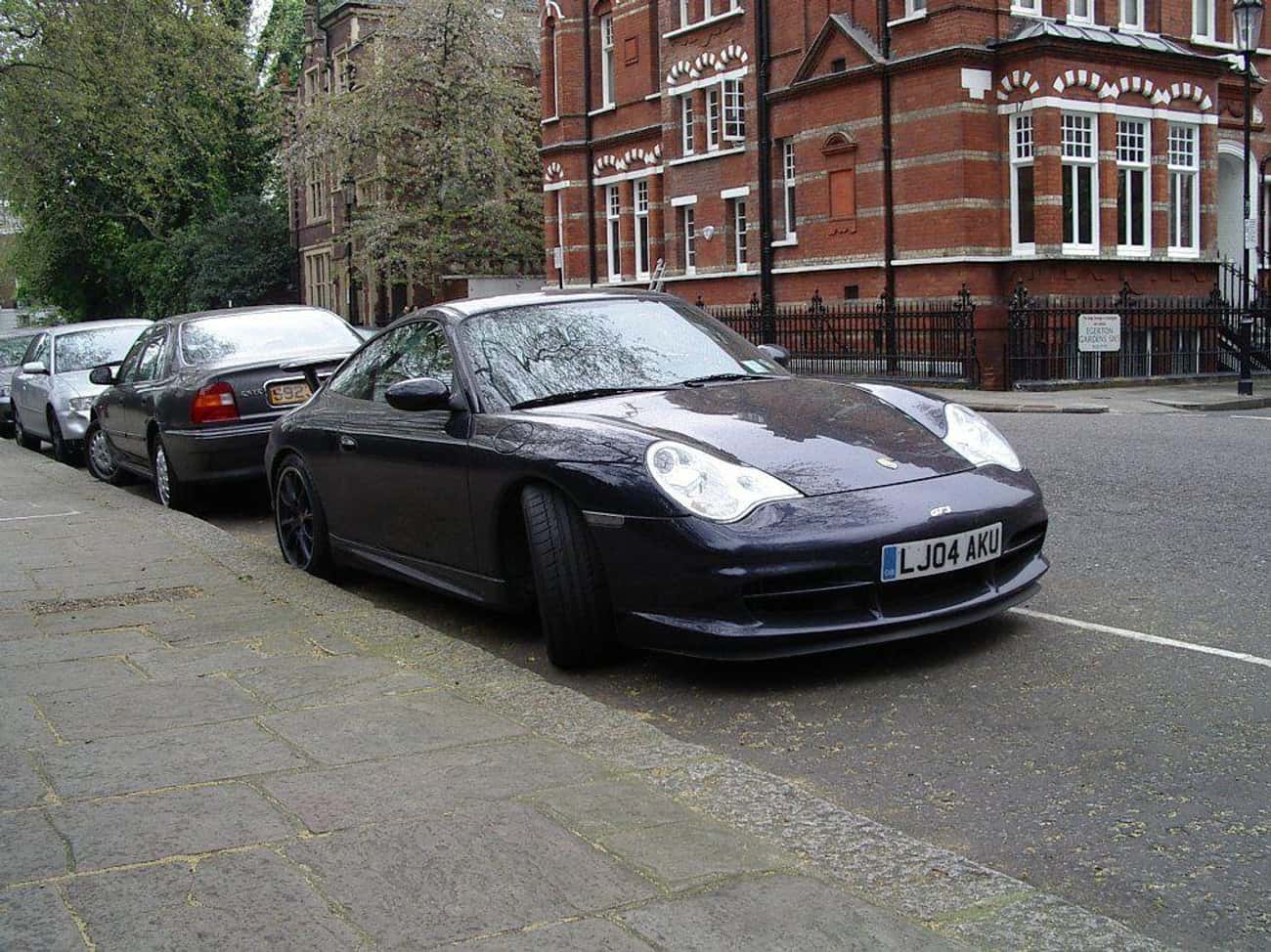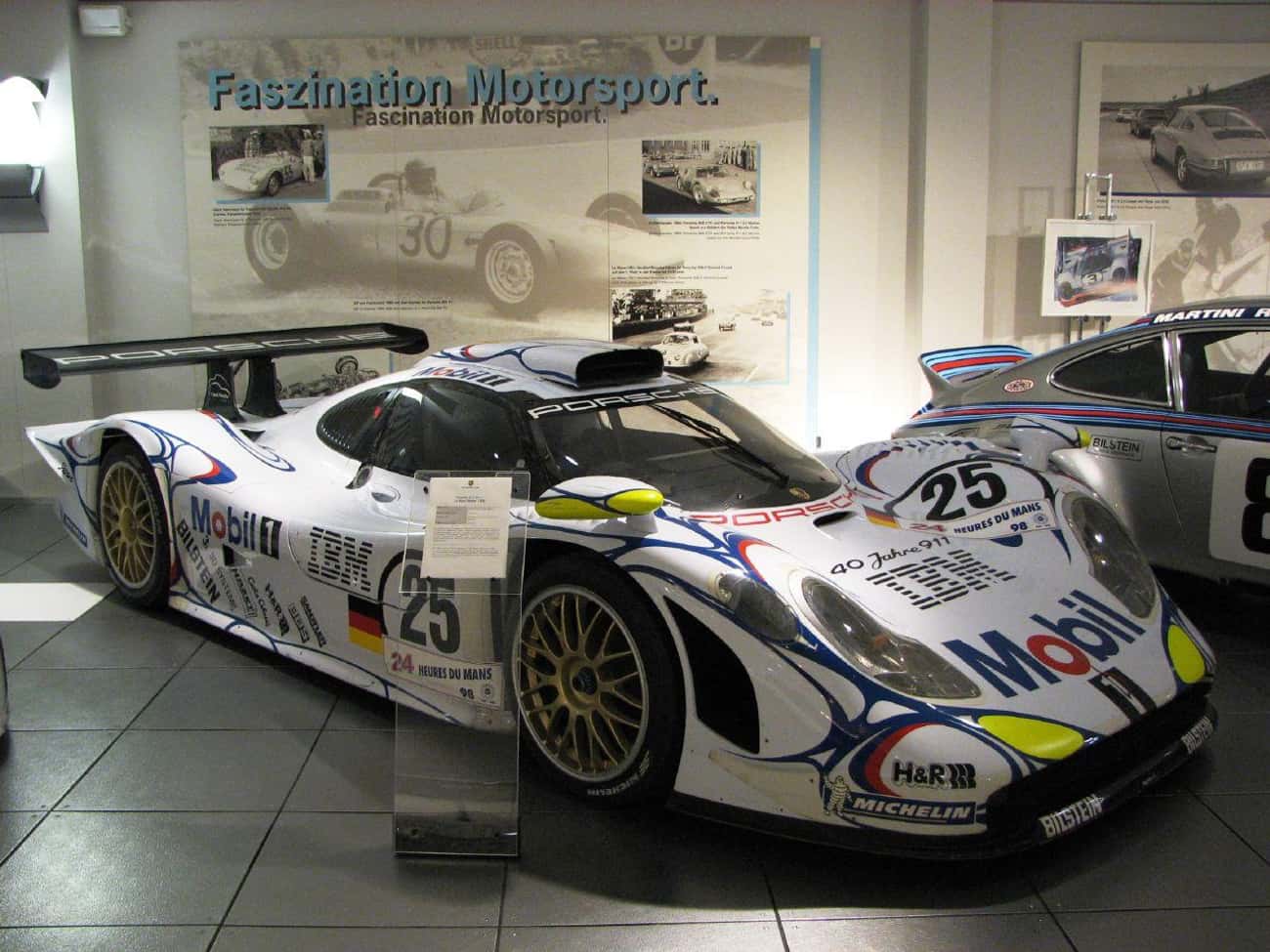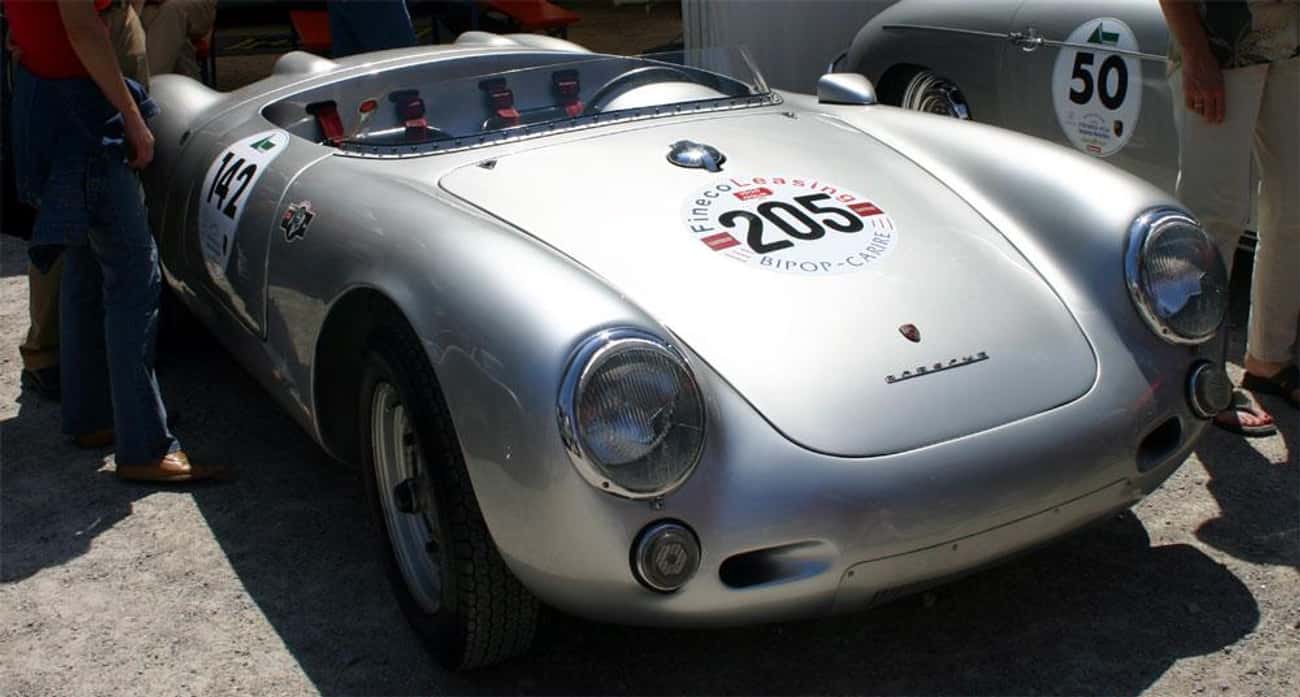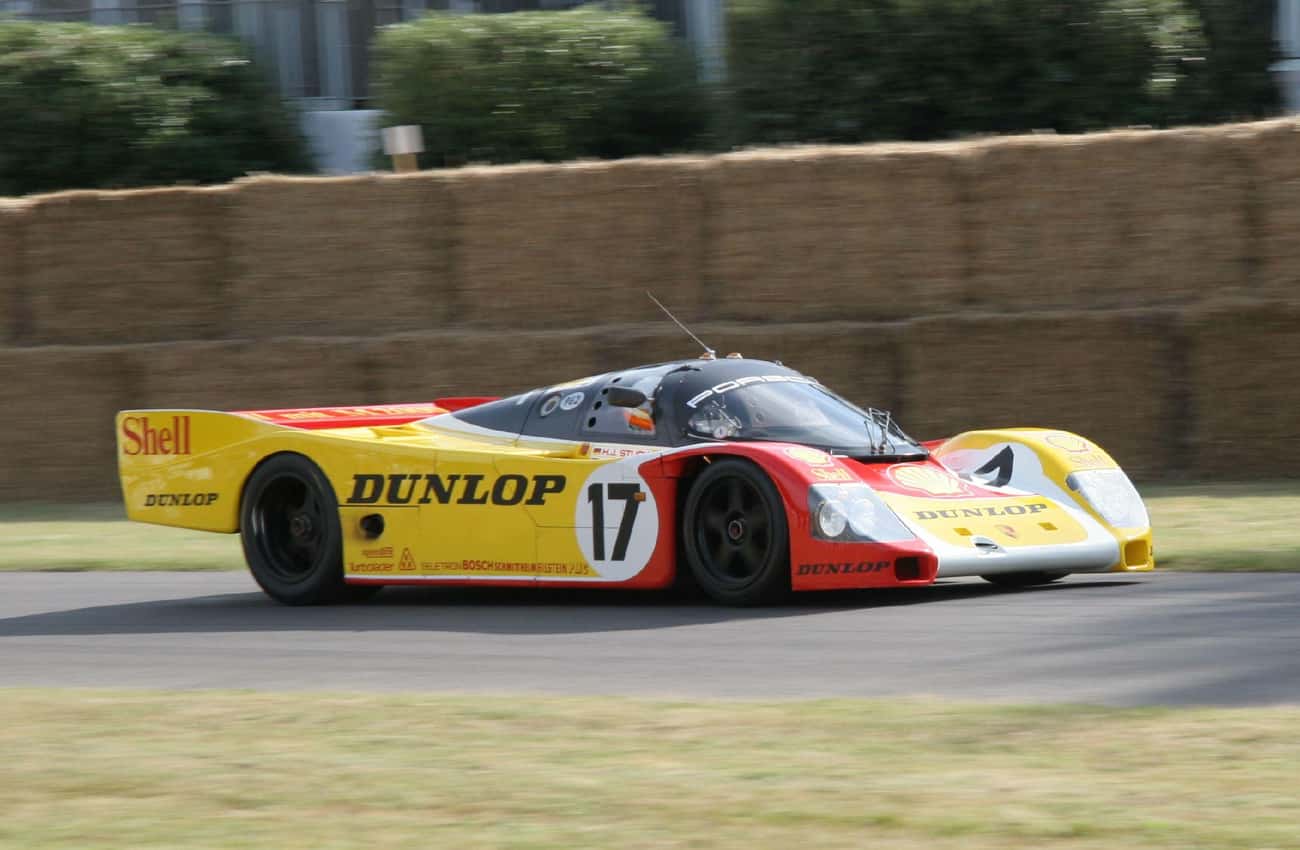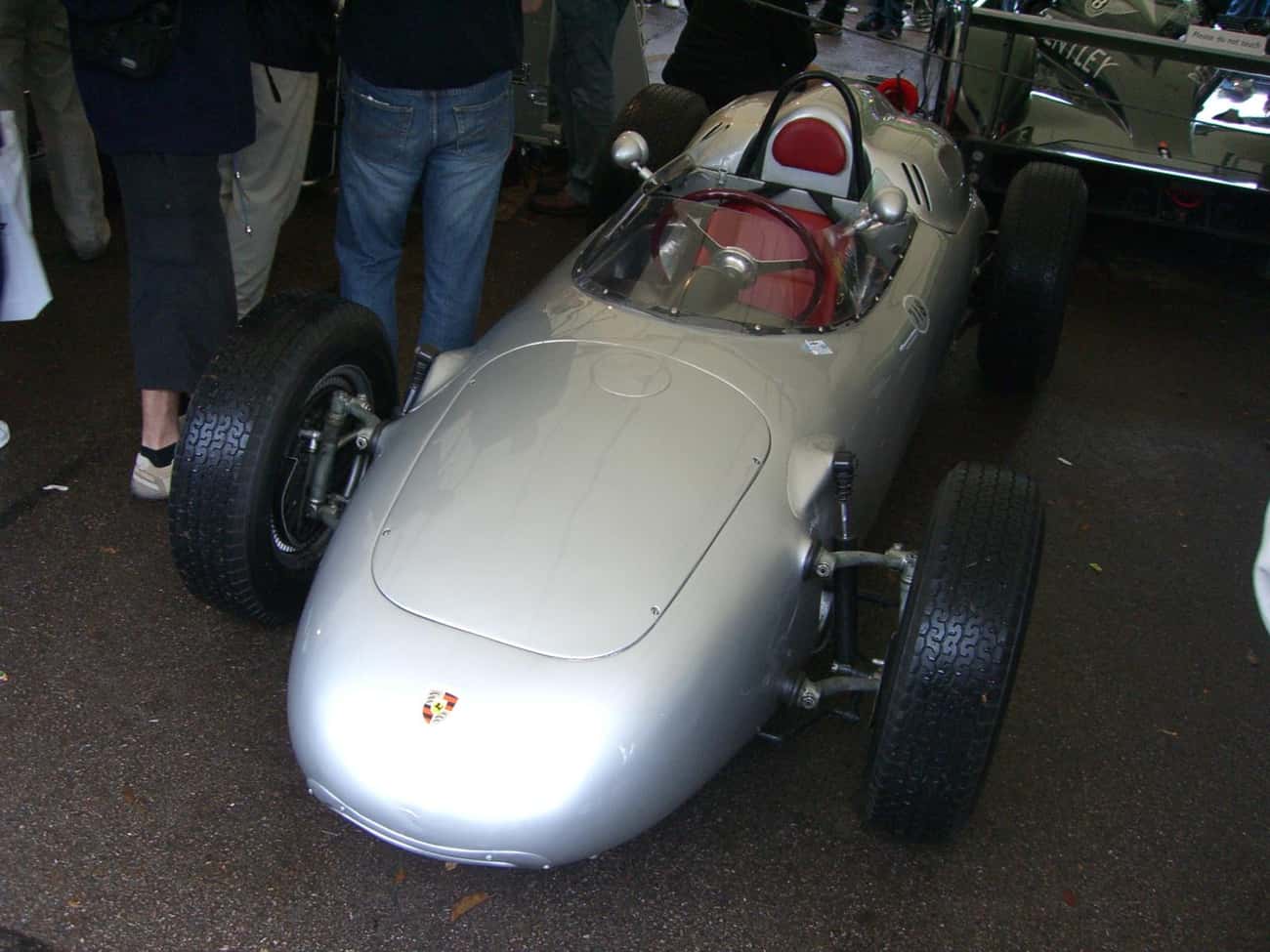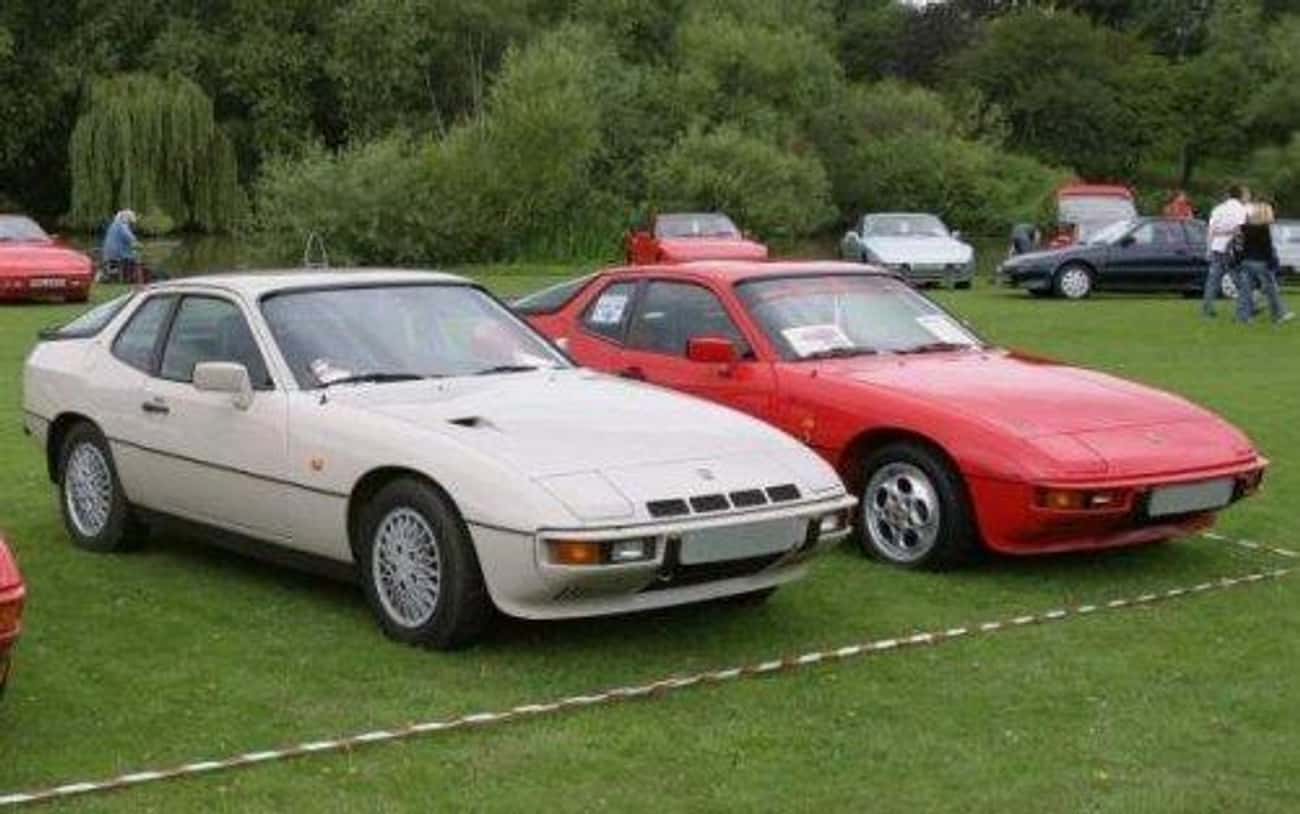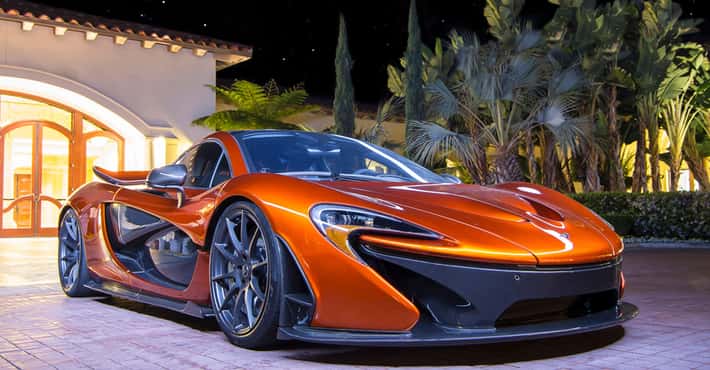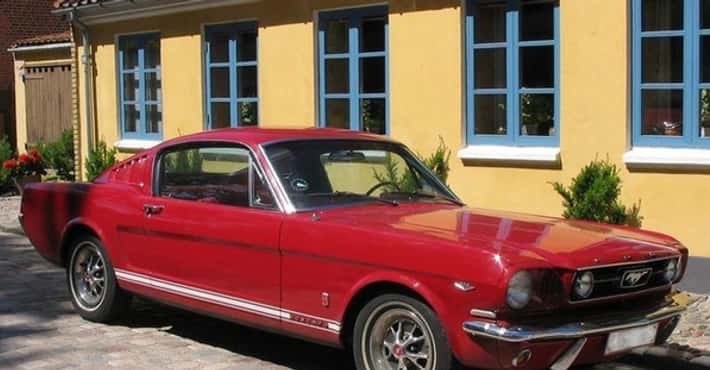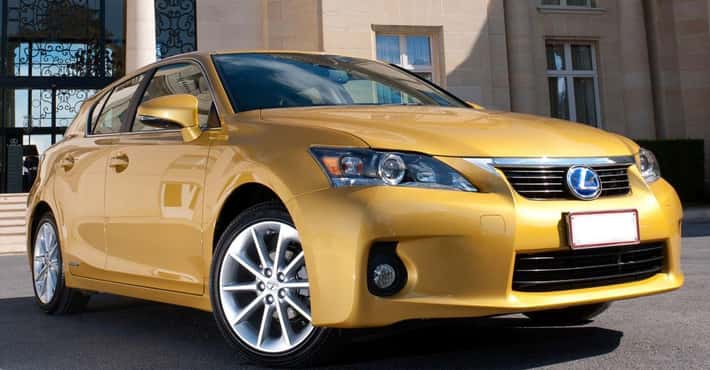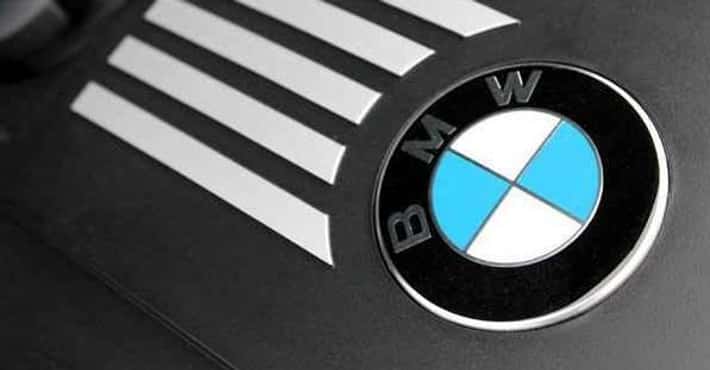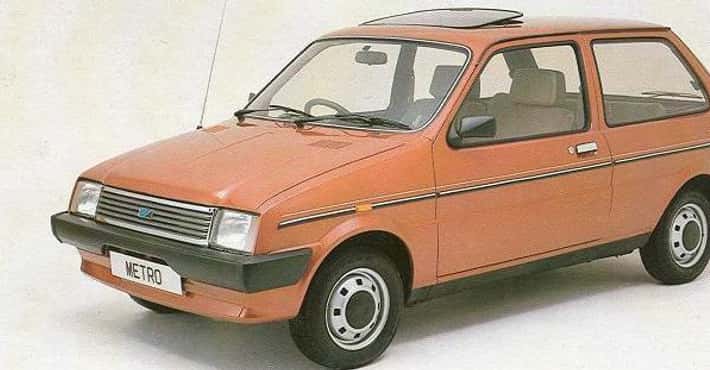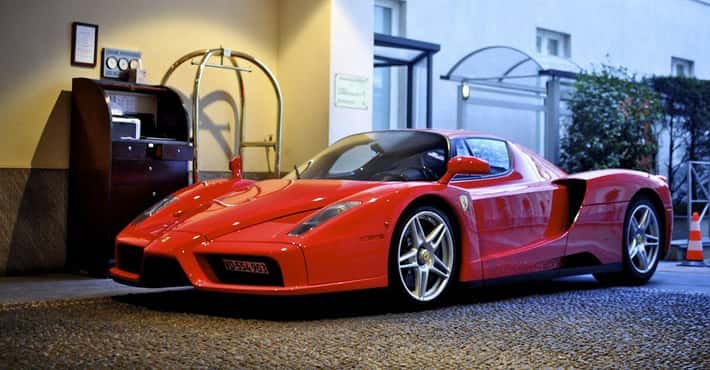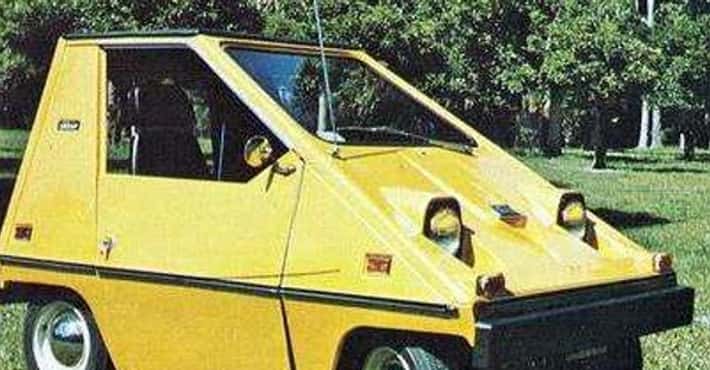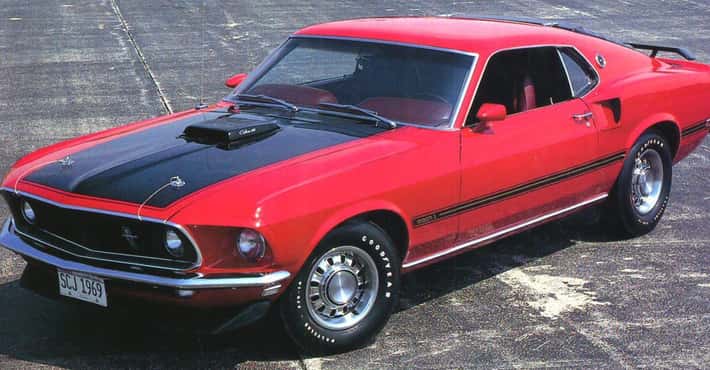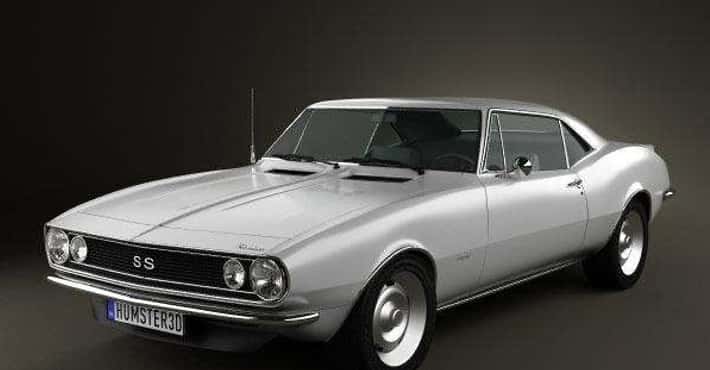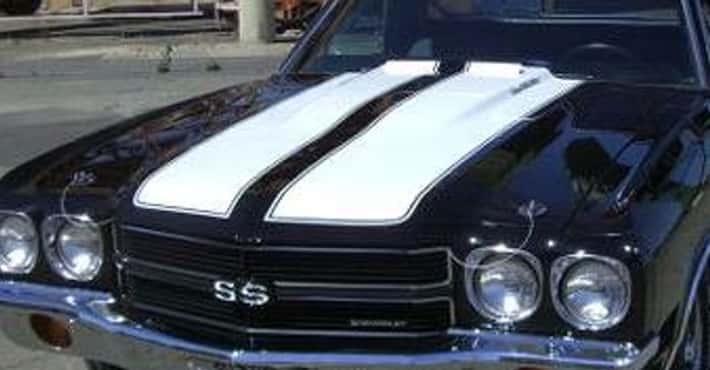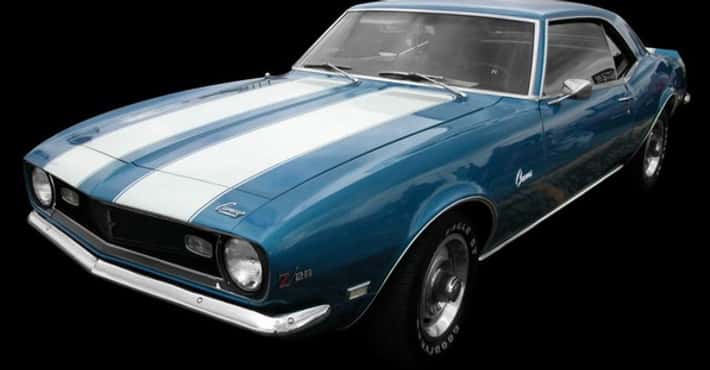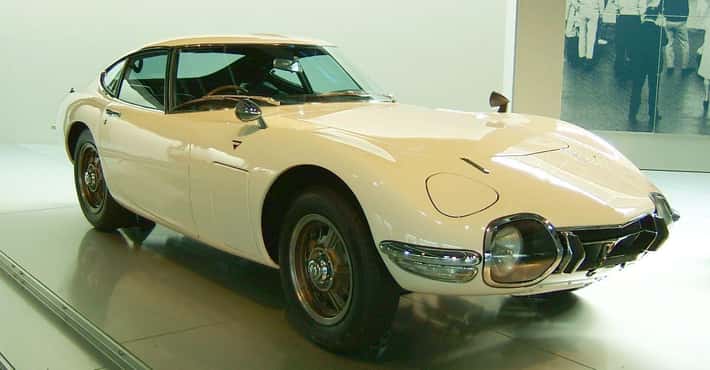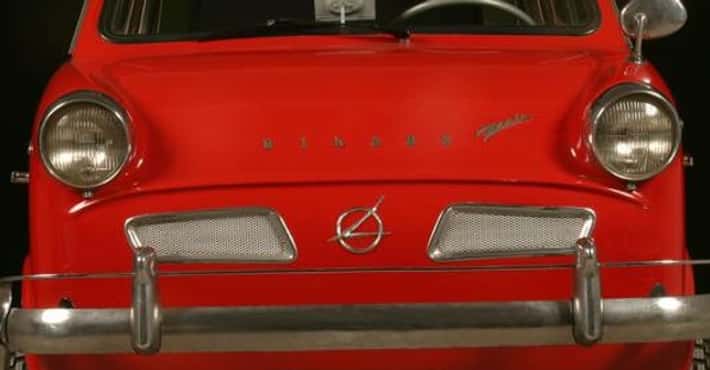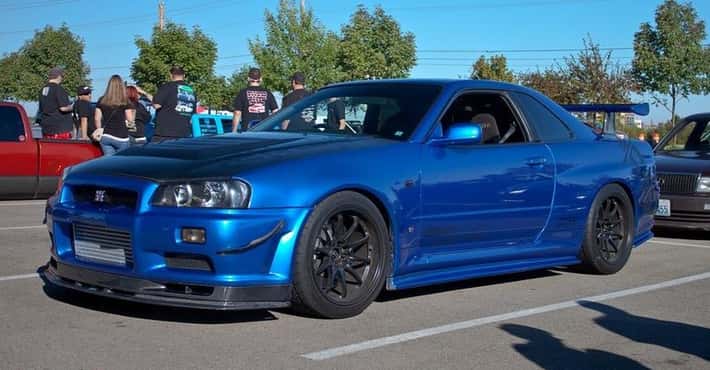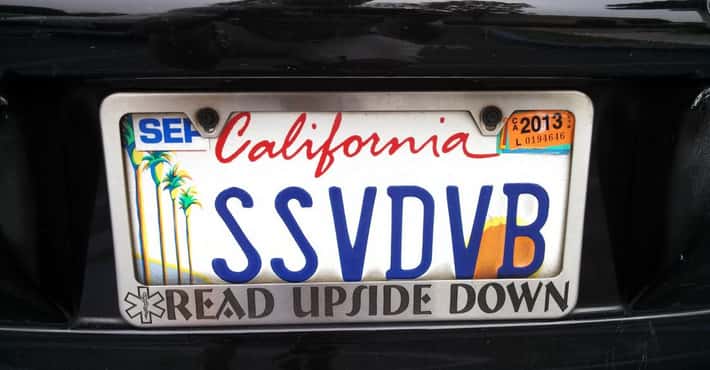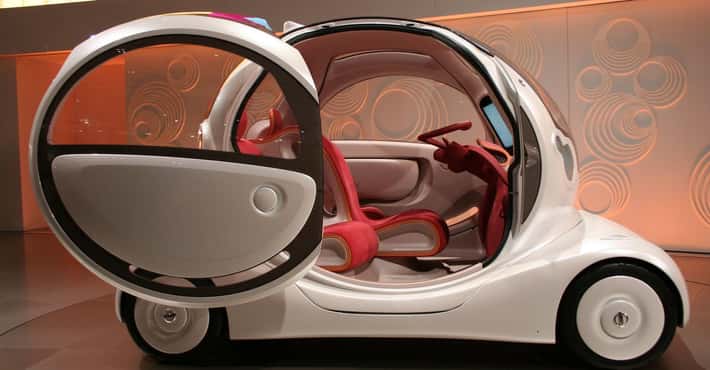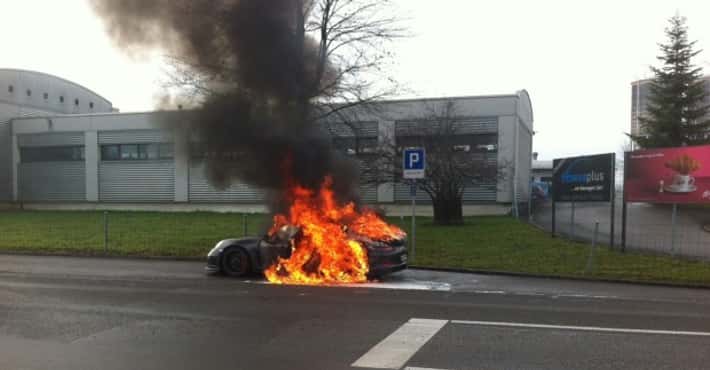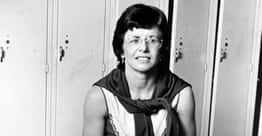Full List of Porsche Models
- Photo: Metaweb (FB) / CC-BY-2.5The Porsche Carrera GT is a mid-engined supercar that was manufactured by Porsche between 2004–2007 in Leipzig, Germany. Sports Car International named the Carrera GT number one on its list of Top Sports Cars of the 2000s, and number eight on Top Sports Cars of All Time list.
- Photo: Alessandro / FlickrThe Porsche Boxster is a mid-engined two-seater roadster built by Porsche. The Boxster is Porsche's first road vehicle to be originally designed as a roadster since the 550 Spyder. The first-generation Boxster was introduced in late 1996; it was powered by a 2.5 litre flat six-cylinder engine. The design was heavily influenced by the 1992 Boxster Concept. In 2000, the base model was upgraded to a 2.7 litre engine and the new Boxster S variant was introduced with a 3.2 litre engine. In 2003, styling and engine output was upgraded on both variants. In 2005, Porsche unveiled the second generation of Boxster: the type 987. The 987 is more powerful than its predecessor and featured styling inspired by the Carrera GT. Engine output increased in 2007, when both Boxster models received the engines from their corresponding Porsche Cayman variants. In 2009, the Boxster models received several new cosmetic and mechanical upgrades, further increasing engine output and performance. The third generation Boxster was launched at the 2012 Geneva Motor Show. Production of the 986 began at the former Porsche 928 facility in Stuttgart, Germany in 1996.
- The original Porsche 911 was a luxury sports car made by Porsche AG of Stuttgart, Germany. The famous, distinctive, and durable design was introduced in autumn 1963 and built through 1989. It was succeeded by a modified version, internally referred to as Porsche 964 but still sold as Porsche 911, as are current models. Mechanically, the 911 was notable for being rear engined and air-cooled. From its inception the 911 was modified both by private teams and the factory itself for racing, rallying and other types of automotive competition. The original 911 series is often cited as the most successful competition car ever, especially when its variations are included, mainly the powerful 911-derived 935 which won 24 Hours of Le Mans and other major sports cars races outright against prototypes.
- The Porsche 911 is a two-door, 2+2 high performance sports car made since 1963 by Porsche AG of Stuttgart, Germany. It has a distinctive design with rear-mounted six cylinder boxer engine and independent rear suspension, an evolution of the swing axle on the Porsche 356. Since its introduction it has undergone continuous development, though the basic concept has remained little changed. The engines were air-cooled until the introduction of the Type 996 in 1998. Throughout its lifetime, the 911 has been modified by private teams and by the factory itself for racing, rallying and other forms of automotive competition. It is among the most successful competition cars ever. In the mid-1970s, naturally aspirated 911 Carrera RSRs won major world championship sports car races such as Targa Florio, Daytona, Sebring and Nürburgring, even against prototypes. The 911-derived 935 turbo also won the coveted 24 Hours of Le Mans in 1979. In the 1999 international poll for the award of Car of the Century, the 911 came fifth.More Porsche 911
- #35 of 73 onThe Best 1960s Cars
- #4 of 223 onThe Ultimate Dream Garage
- #21 of 56 onDream Cars You Wish You Could Afford Today
- The Porsche Cayman is a rear mid-engined, rear wheel drive 2-seat sports car produced by Porsche AG of Germany. First launched in the 2006 model year, the Cayman is a coupé derived from Porsche's second and third generation Boxster roadster. Like the Boxster, most Caymans were assembled in Finland for Porsche by Valmet Automotive. Porsche's Deputy Chairman, Holger P. Haerter stated that the contract with Valmet Automotive will end in 2012, and the Cayman's production was to be outsourced to Magna Steyr in Graz, Austria. However, as Volkswagen assumed control of Porsche AG, production of Caymans and Boxsters after 2012 began in the former Karmann plant in Osnabrück, Germany, which is now owned by Volkswagen and also used for production of the 2012 Golf convertible.
- Photo: Metaweb (FB) / CC-BYThe Porsche Panamera is a luxury four-door sedan. It is front-engined with rear-wheel drive, with four-wheel drive versions also available. The Porsche Panamera production model was unveiled at the 13th Auto Shanghai International Automobile Show in Shanghai, China, on April 2009. In 2011, hybrid and diesel versions were launched. In April 2013, a facelift to the Panamera was announced, launching again at the Auto Shanghai show. A plug-in hybrid version, the Panamera S E-Hybrid, was released in the U.S. market in November 2013.
- Photo: Metaweb (FB) / CC-BY-SA-2.0The Porsche 959 is a sports car manufactured by Porsche from 1986 to 1989, first as a Group B rally car and later as a legal production car designed to satisfy FIA homologation regulations requiring at least 200 street legal units be built. When it was introduced, the twin-turbocharged 959 was the world's fastest street-legal production car, boasting a top speed of 195 miles per hour, with the sport model capable of reaching 197 miles per hour. During its production run it was hailed as the most technologically advanced road-going sports car ever built, and forerunner of all future super cars. It was one of the first high-performance vehicles with all-wheel drive, providing the basis for Porsche's first all-wheel drive Carrera 4 model. Its performance convinced Porsche executives to make all-wheel drive standard on all 911 Turbos starting with the 993. In 2004, Sports Car International named the 959 number one on its list of Top Sports Cars of the 1980s.
- Photo: Metaweb (FB) / Public domainThe Porsche 356 is a luxury sports car which was first produced by Austrian company Porsche Konstruktionen GesmbH, and then by German company Dr. Ing. h. c. F. Porsche GmbH. It was Porsche's first production automobile. Earlier cars designed by the Austrian company includes Cisitalia Grand Prix race car, and the Volkswagen Beetle as well as Auto Union Grand Prix cars were designed by the German company. The 356 was a lightweight and nimble-handling rear-engine rear-wheel-drive 2-door sports car available in hardtop coupe and open configurations. Engineering innovations continued during the years of manufacture, contributing to its motorsports success and popularity. Production started in 1948 at Gmünd, Austria, where approximately 50 cars were built. In 1950 the factory relocated to Zuffenhausen, Germany, and general production of the 356 continued until April 1965, well after the replacement model 911 made its autumn 1963 debut. Of the 76,000 originally produced, approximately half survive.
- The Porsche Cayenne is a mid-size luxury crossover manufactured by the German manufacturer Porsche since 2002, with North American sales beginning in 2003. Its platform was developed by Porsche and is shared with the Volkswagen Touareg. It is the first V8-engined vehicle built by Porsche since 1995, when the Porsche 928 was discontinued. Since 2008, all engines have featured direct injection technology. The second-generation Cayenne was unveiled at the 2010 Geneva Motor Show in March following an online reveal. Although the Cayenne shares its platform, body frame and doors with the similar Volkswagen Touareg, all other aspects of vehicle design, tuning and production are done in-house at Porsche. The second generation received a facelift in 2014 with minor external changes, and introduced a new plug-in E-Hybrid version, with its public launch at the Paris Motor Show.
- 997 is the internal designation for the Porsche 911 model manufactured and sold by German manufacturer Porsche between 2004 and 2012. Production of the Carrera and Carrera S coupés began in early 2004, all-wheel drive Carrera 4 and Carrera 4S versions began shipping in November 2005, Turbo and GT3 derivatives went on sale in late 2006 and the 911 GT2 in 2007. In addition to the coupé and cabriolet versions, Targa versions of the Carrera 4 and Carrera 4S were also available, which carry on with the "glass canopy" roof design used on all Targa 911s since the Type 993 Generation 911. The 997 was an evolution of the preceding 996, with the most significant changes being interior and exterior styling. Larger 18 inch wheels were fitted as standard, other engineering changes include slightly increased power, however the car is technically very similar to its predecessor. A new S version was offered, with additional power from a slightly larger engine, sports suspension, and sports exhaust.
- The Porsche 911 GT2 was a high performance sports car built by the German manufacturer Porsche from 1993 to 2012. It was based on the 911 Turbo, and uses a similar twin-turbocharged engine, but features numerous upgrades, including engine upgrades, larger brakes, and stiffer suspension calibration. The GT2 is significantly lighter than the Turbo due to its use of rear-wheel drive instead of all-wheel drive, and the lightening or removal of interior components. As a result, the GT2 was the most expensive and the highest trim level within the 911 lineup.
- The Porsche 912 is a sports car that was manufactured by Porsche of Germany between 1965 and 1969 as their entry-level model. The 912 is a nimble-handling compact performance four-seat vehicle, delivering 90 SAE horsepower at 5800 rpm. It is capable of up to 30 miles per US gallon fuel economy. This combination is possible because of a high-efficiency petrol engine, low weight, and low drag. A variant of the Type 911, one of the most famous and successful sports cars of all time, the Type 912 initially outsold the 911, boosting the manufacturer's total production until success of the 911 was assured.
- Photo: Metaweb (FB) / CC-BY-2.5The Porsche 356/1 was the first real Porsche car created by Ferdinand "Ferry" Porsche. This prototype car was a two-seater open roadster with a mid-mounted, air-cooled flat-4 engine of 1,131 cc displacement that produced 40 horsepower. While the body was an original design, most of the mechanicals were derived from the Volkswagen Beetle which Ferry's father, Ferdinand Porsche, had designed. The aluminum roadster body of the 356/1 was designed by Porsche employee Erwin Komenda in April 1948 at Gmünd and completed only a month later. Smooth and low, the 356/1 set the pattern for later 356s with one fundamental difference; the engine of the production cars was moved behind the rear axle. The car was registered by the state of Carinthia with the license plate K45-286 and made its maiden voyage on June 8, 1948. Only one 356/1 was made and it is on display at the Porsche Museum, Stuttgart.
- The Porsche 930 was a sports car built by Porsche between 1975 and 1989, known to the public as the 911 Turbo. It was the maker's top-of-the-range 911 model for its entire production duration and at the time of its introduction the fastest production car available in Germany.
- Photo: Metaweb (FB) / Public domainThe Porsche 944 was a luxury sports car built by Porsche from 1982 to 1991. It was built on the same platform as the 924, which remained in production until 1988. The 944 was intended to last into the 1990s, but major revisions planned for a 944 "S3" model were eventually rolled into the 968 instead, which replaced the 944. The 944 was a successful model and was available as both a coupé and cabriolet in naturally aspirated and turbocharged forms.
- The Porsche 908 was a racing car from Porsche, introduced in 1968 to continue the Porsche 906/Porsche 910/Porsche 907 series of models designed under Ferdinand Piech. As the FIA had announced rule changes for Group 6 Prototype-Sports Cars limiting engine displacement to 3000 cc, as in Formula One, Porsche designed the 908 as the first Porsche sports car to have an engine with the maximum size allowed. The previous Porsche 907 only had a 2200 cc flat-8 engine with 270 hp. The new 3-litre Flat-8 engine produced initially 257 kW at 8400 rpm, as well as some teething problems. Also, being traditionally air-cooled and with only 2 valves per cylinder, it was still down on power compared to more modern F1 designs which delivered over 400 hp, but were not suited to endurance racing. The 908 originally was a closed coupe to provide low drag at fast tracks, but from 1969 on was mainly raced as the 908/2, a lighter open spyder. A more compact 908/3 was introduced in 1970 to complement the heavy Porsche 917 on twisty tracks that favored nimble cars, like Targa Florio and Nürburgring.
- Photo: Metaweb (FB) / Public domainThe Porsche 911 GT3 is a high performance version of the Porsche 911 sports car primarily intended for racing. It is a line of high-performance models, which began with the 1973 911 RS. The GT3 is named after the Fédération Internationale de l'Automobile GT3 class it was designed to compete in. A number of variations, designed for road and track duty, have been introduced since its launch in 1999. Since the start of the production in 1999, more than 14,000 911 GT3 cars have been produced. The GT3 has had a successful racing career in the one-make national Porsche Carrera Cup series, and the international Porsche Supercup. It has won championship and endurance races, including the GT class of the American Le Mans Series seven times, first overall in the 24 Hours of Daytona, and first overall at the 24 Hours Nürburgring six times.
- Photo: Metaweb (FB) / Public domainThe Porsche 914 or VW-Porsche 914 was a mid-engined, targa-topped two-seat roadster designed, manufactured and marketed collaboratively by Volkswagen and Porsche from 1969 to 1976.
- Photo: Metaweb (FB) / Public domainThe Porsche 914-6 GT was a race car built and sold collaboratively by Volkswagen and Porsche.
- Photo: Metaweb (FB) / Public domainThe Porsche 928 is a luxury GT car which was produced by Porsche AG of Germany from 1978 to 1995. Originally intended to replace the company's well-known and famed 911, the 928 combined the power, poise, and handling of a sports car with the refinement, comfort, and equipment of a luxury sedan to create what some Porsche executives thought would be a vehicle with wider appeal than the compact, quirky and sometimes difficult 911. Since its inception in 1949, Porsche has manufactured only seven front-engined models, four of which were coupes, including the 928. The car has the distinction of being the company's only coupe powered by a front-mounted V8 engine, and the company's first production V8 powered model.
- Photo: Metaweb (FB) / CC-BYThe Porsche 718 is an open-cockpit racing car built by Porsche between 1957 and 1962. The 718 was a development of the successful Porsche 550A with improvements being made to the body work and suspension. The new front frame resembled the letter K if viewed from the front and this led to the car being referred to as the RSK. It had a mid-engined layout and used the 142 horsepower 1.5-litre Type 547/3 quad-cam engine introduced in the 550A. The car made its racing debut at the 1957 24 Hours of Le Mans driven by Umberto Maglioli and Edgar Barth. The car failed to finish the race due to an accident. In 1958, the car finished first in class and third overall at Le Mans guided by Jean Behra and Hans Herrmann. Jean Behra also brought one of the cars home second at the Targa Florio. In 1959, the car, driven by Edgar Barth and Wolfgang Seidel, claimed overall victory at the Targa Florio. A 718 also won the European Hill Climb Championship in both 1958 and 1959. In 1961 Masten Gregory and Bob Holbert piloted a 718/4 RS Spyder to a class win at Le Mans.
- Photo: F.Massart / flickr / CC-BY-ND 2.0The Porsche 964 is the company's internal name for the Porsche 911 manufactured and sold between 1989 and 1994. Designed by Benjamin Dimson in 1986, it featured significant styling revisions over previous 911 models, most prominently the more integrated bumpers. It was the first generation 911 to be offered with Porsche's optional Tiptronic automatic transmission and all wheel drive as options.
- Photo: Metaweb (FB) / Public domainThe Porsche 968 was a luxury sports car sold by Porsche AG from 1992 to 1995. It took over the entry-level position in Porsche's lineup from the 944, with which it shared about 20% of its parts. The 968 became the final model in an evolving line, starting almost 20 years earlier with the introduction of the Porsche 924.
- Photo: Katrox - www.kevingoudin.com / flickr / CC-BY-NC-ND 2.0993 is the company's internal name for the version of the Porsche 911 model manufactured and sold between late 1993 and early 1998, replacing the 964. Its discontinuation marked the end of air-cooled Porsches. Like previous and future generations of the Porsche 911, there were several variants of the car manufactured, varying in body style, engines, drivetrains and included equipment. The Porsche 993 was replaced by the Porsche 996. The external design of the Porsche 993, penned by Englishman Toni Hatter, retained the basic bodyshell architecture of the 964 and other earlier 911 models, but with revised external panels, with much more flared wheelarches and a smoother front and rear bumper design, an enlarged retractable rear wing, teardrop mirrors, but keeping the doors and roof panels.
- 996 is the internal designation for the Porsche 911 model manufactured with first model year 1999 and last 2004. It was replaced by the Type 997 in model year 2005. The 996 had little in common with its predecessor, with the first new chassis platform since the original 911 and a new water-cooled engine. Technically, it was a major change, a complete breakaway from the original car other than overall layout. Development was shared with the earlier Boxster including the entire front end and front suspension, much of the interior, and the engine was an enlarged development of the Boxster unit. However the multi-link rear suspension, derived from the earlier 993, was different. At its debut, the 996 featured the most significant change from the classic 911 series, a water-cooled engine replacing the previously air-cooled engine. Progressively stringent emissions and noise regulations, environmental concerns, a higher expectation for refinement and a high-performance 4 valve per cylinder engine made the switch necessary. Other major changes include a completely new platform having a sleeker body with a more raked windshield, and re-designed interior.
- Photo: Metaweb (FB) / CC-BYThe Porsche 911 GT1 was a car designed for competition in the GT1 class of sportscar racing, which also required a street legal version for homologation purposes. The limited-production street-legal version was labeled the 911 GT1 Straßenversion.
- The Porsche 550 was a racing sports car produced by Porsche from 1953-1956.
- Photo: Metaweb (FB) / CC-BYThe Porsche 962 is a sports-prototype racing car built by Porsche as a replacement for the 956 and designed mainly to comply with IMSA's GTP regulations, although it would later compete in the European Group C formula as the 956 had. The 962 was introduced at the end of 1984, from which it quickly became successful through private owners while having a remarkably long-lived career, with some examples still proving competitive into the mid-1990s.
- Photo: Metaweb (FB) / CC-BY-2.5The Porsche 804 was a Formula One racing car produced in 1962, following the 718 and 787. The flat-8 air-cooled engine powered car developed 180 hp at 9,200 rpm gave Porsche its only F1 wins as a chassis maker, at the 1962 French Grand Prix, and at the Solituderennen at Castle Solitude in Stuttgart, both by Dan Gurney. The cylinder dimensions were 66.0 x 54.6 mm giving a displacement of 1,494.38 cc.
- Photo: Metaweb (FB) / Public domainThe Porsche 924 is a luxury sports car which was produced by Porsche AG of Germany from 1976 to 1988. A two-door, 2+2 coupé, the 924 replaced the 914 as the company's entry-level model, and was the model that finally retired the 912. In production terms, the 924 was the first Porsche model powered by a water-cooled, front-mounted engine although the similarly configured 928 was designed first. The front-engine, rear wheel drive arrangement was normal for most other manufacturers, but it was unusual for Porsche having previously only used mid- or rear-mounted engines of a boxer configuration, all of which had been air-cooled. It was the first Porsche to be offered with a fully automatic transmission. The first official appearance of the 924 took place in November 1975 at the harbour at La Grande Motte, Camargue in the south of France. The model was a success with just over 150,000 produced, and it not only helped to take Porsche out of financial ruin, but created the revenue stream needed to continue building and developing the 911. The 924 was replaced by the 944 in 1983 in the U.S. market, but continued to be produced until 1985 for other markets.




